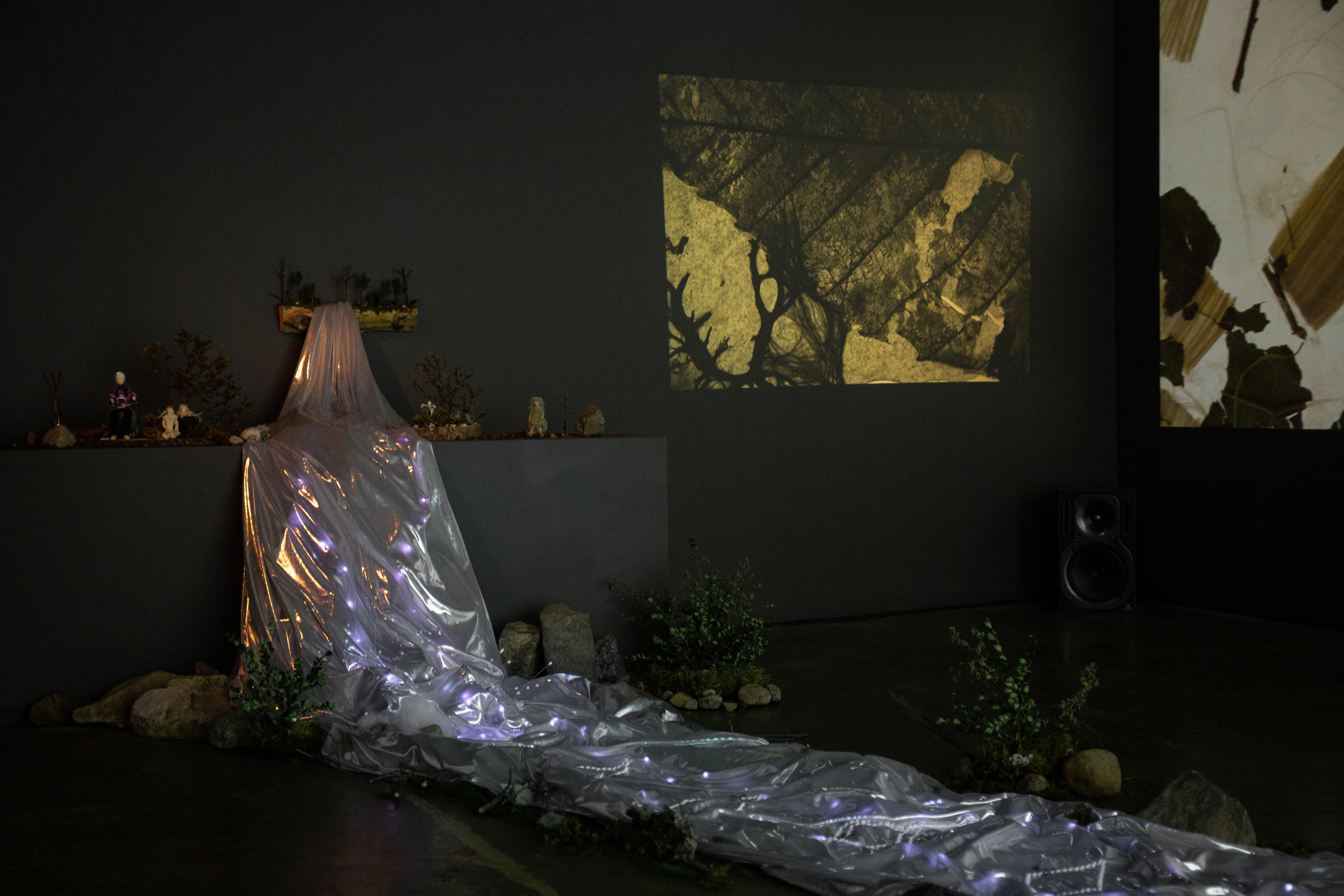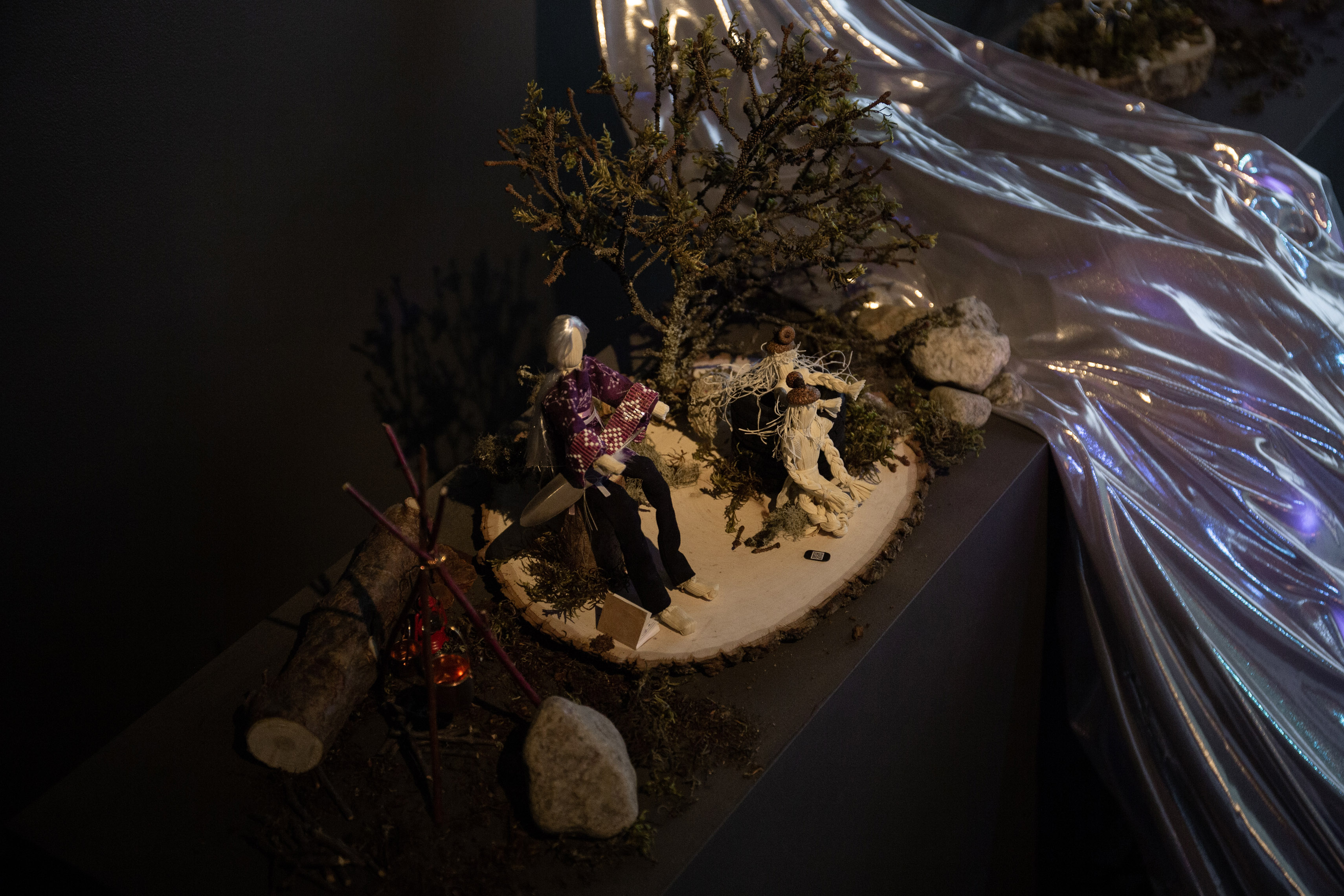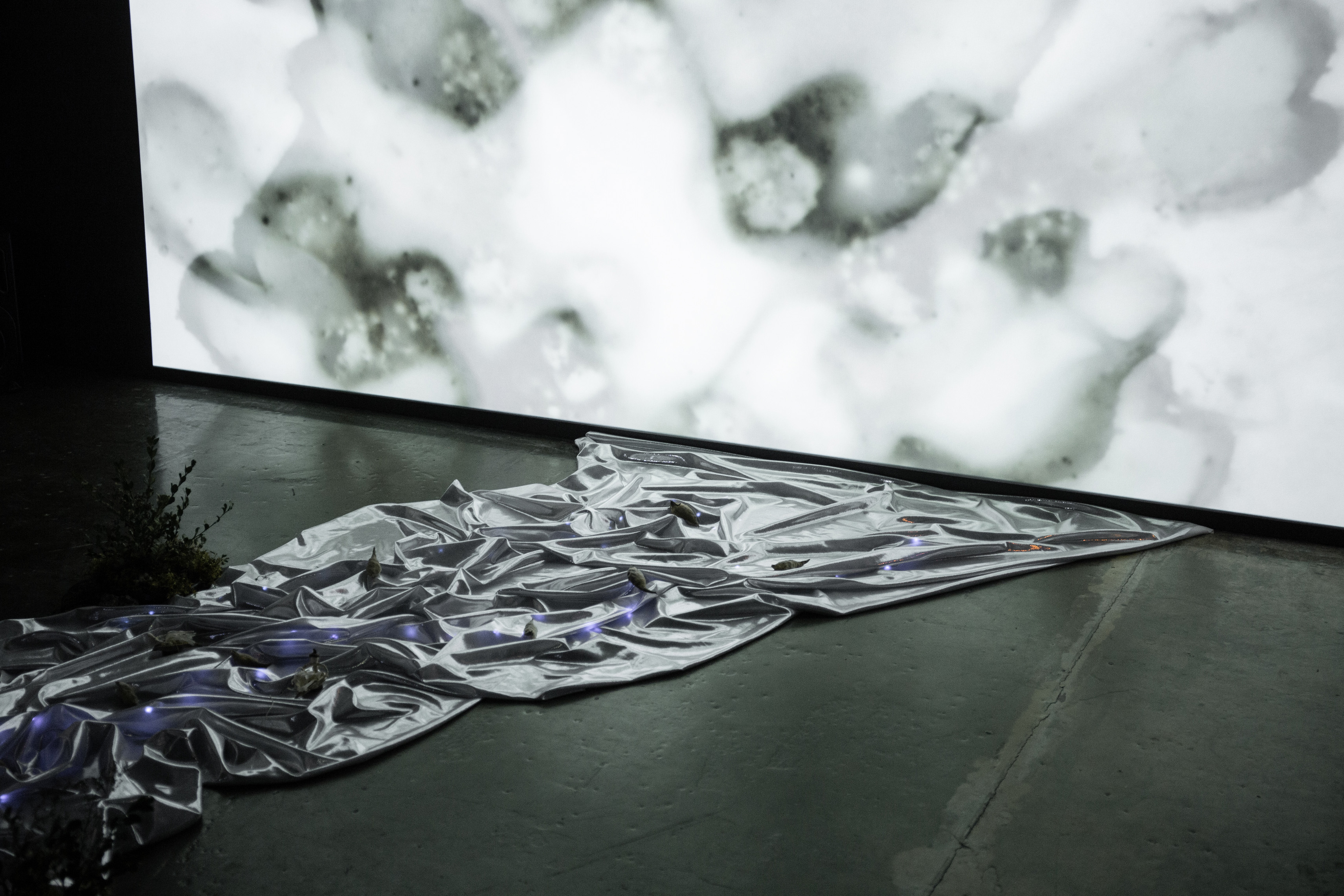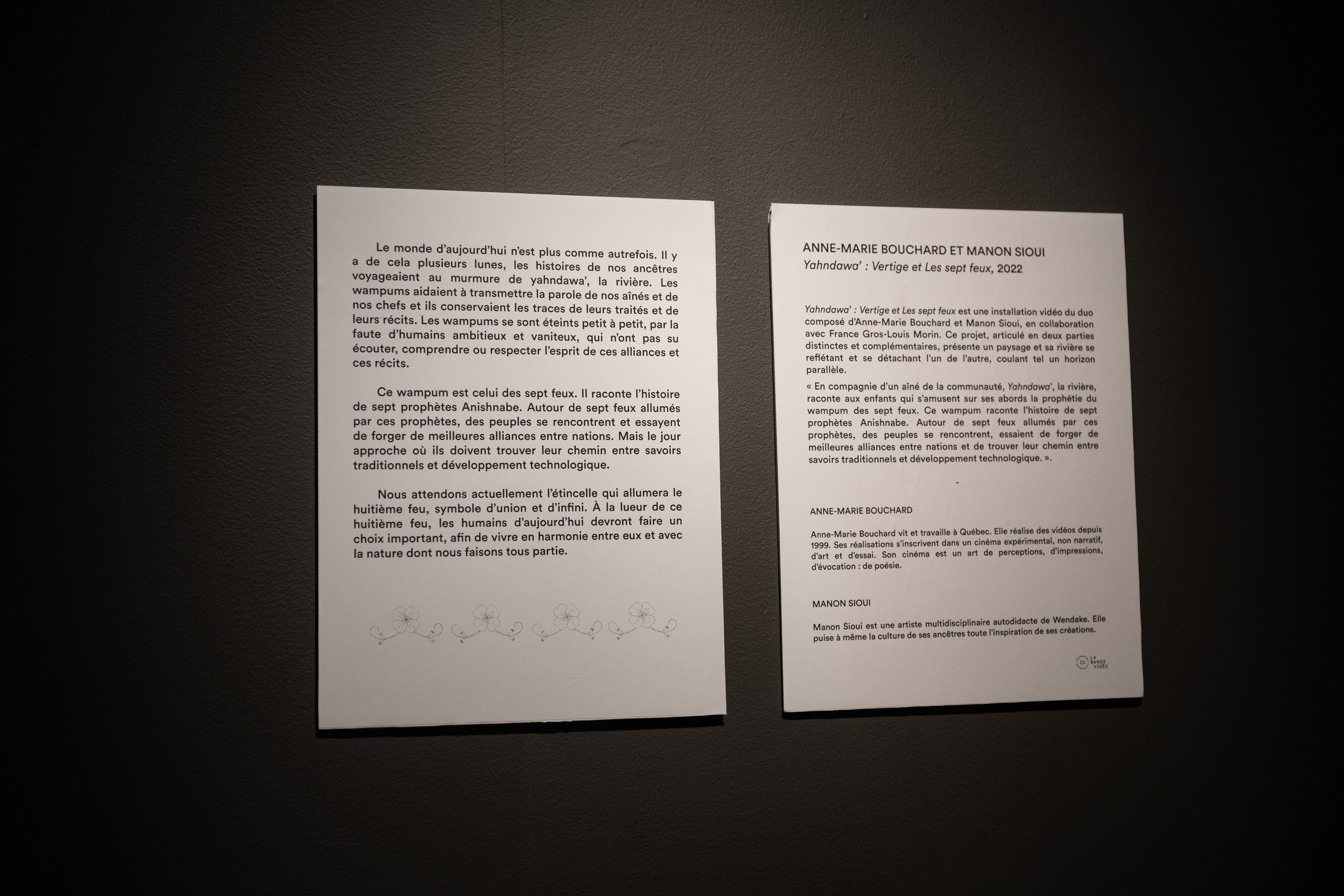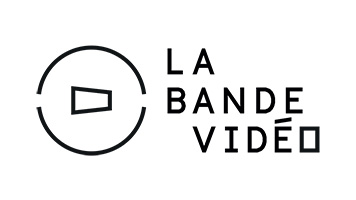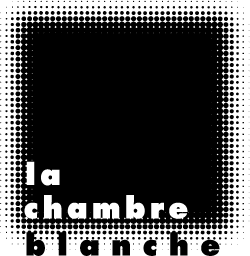Exhibition from September 9 to October 16
In the galleries of VU, L’Œil de poisson, La Bande Vidéo and in the window of Méduse, at 580 and 620 Côte d’Abraham
In collaboration with Productions Recto-Verso
Opening on September 9, from 5pm
5pm – Opening of the galleries
6pm – Acknowledgements
7pm – Performance by Philip Després
Artists : Annie Baillargeon, Aïcha Bastien N’Diaye, Anne-Marie Bouchard, Dgino Cantin, Philip Després, Alexis Gros-Louis, France Gros-Louis Morin, Érika Hagen-Veilleux, Andrée Levesque Sioui, Jeffrey Poirier, Nicolas Renaud, Alain-Martin Richard, Teharihulen Michel Savard, Manon Sioui
Writers : Guy Sioui Durand and Anne-Marie Proulx
In collaboration with : Avatar, La Bande Vidéo, La Chambre Blanche, Le Lieu, L’Œil de Poisson, Rhizome
Yahndawa’ is ahaha’, an ancient waterway which the earth, ya’ta’, wears on her back. She carried the sky, yaronhia’, on her shoulders long before she took us into her arms. Änen’enh; we are her children. As she teaches us, the stories and dreams that we carry are renewed in our relationships, commensurate with what we give and what we receive. Kwaweyih. Our words, onywawenda’, are also promises. Our actions mark the ecosystems. One day, we shore up the riverbanks; the next, we let the waters and life reclaim their natural course. Time and time again, we portage and we are transported, we interconnect and we shape our landscapes. Onyiondih. Yithïa’ch.
—Andrée Levesque Sioui and Anne-Marie Proulx
Yahndawa’ is an exchange among seven artists from Wendake and seven artists from Quebec City who have been asked to discuss their practices, collaborate, and co-create with the support of seven artists’ organizations. Following the river (yahndawa’—known as the Atiawenhrahk/Saint-Charles) that joins our two communities and embracing the notion of portaging, we each entered the project with our own baggage which we then unpacked in new lands, all the while supporting each other in our shared adventures.
Since 2020, an artistic committee* comprising members of the Wendat community and VU have met regularly to develop and nurture an exchange project with the aim of forging bonds between our two communities. Yahndawa’ is an exchange of artistic practices, but more broadly, it also allows us to consider our concepts, ways of doing things, visions, realities, and identities.
–
Workshops (summer/fall 2021)
During meetings in Wendake and Quebec City and on a river canoe outing, the artists and representatives of each of the organizations involved travelled together through the places where our histories converge.
Residences (winter/spring/summer 2022)
The artists collaborated on the development of ideas and projects, with technical and artistic support from the organizations. During the residencies, the artists were based at a group workshop at Méduse.
Dissemination (fall 2022)
The artists will present the work they have developed throughout Yahndawa’ as an exhibition in Quebec City and an event in Wendake.
*Artistic commitee : Annie Baillargeon, Jacynthe Carrier, France Gros-Louis Morin, Véronique Isabelle, Anne-Marie Proulx, Teharihulen Michel Savard, Manon Sioui
This project is an alliance between the Wendat collective and VU to cultivate relationships between the non-indigenous and indigenous artistic communities of the Quebec region located in Nionwentsïo, Wendat territory.
Ce projet est réalisé avec le soutien financier du Conseil des Arts et des Lettres du Québec ainsi que celui de l’Entente de développement culturel entre la Ville de Québec et le ministère de la Culture et des Communications.
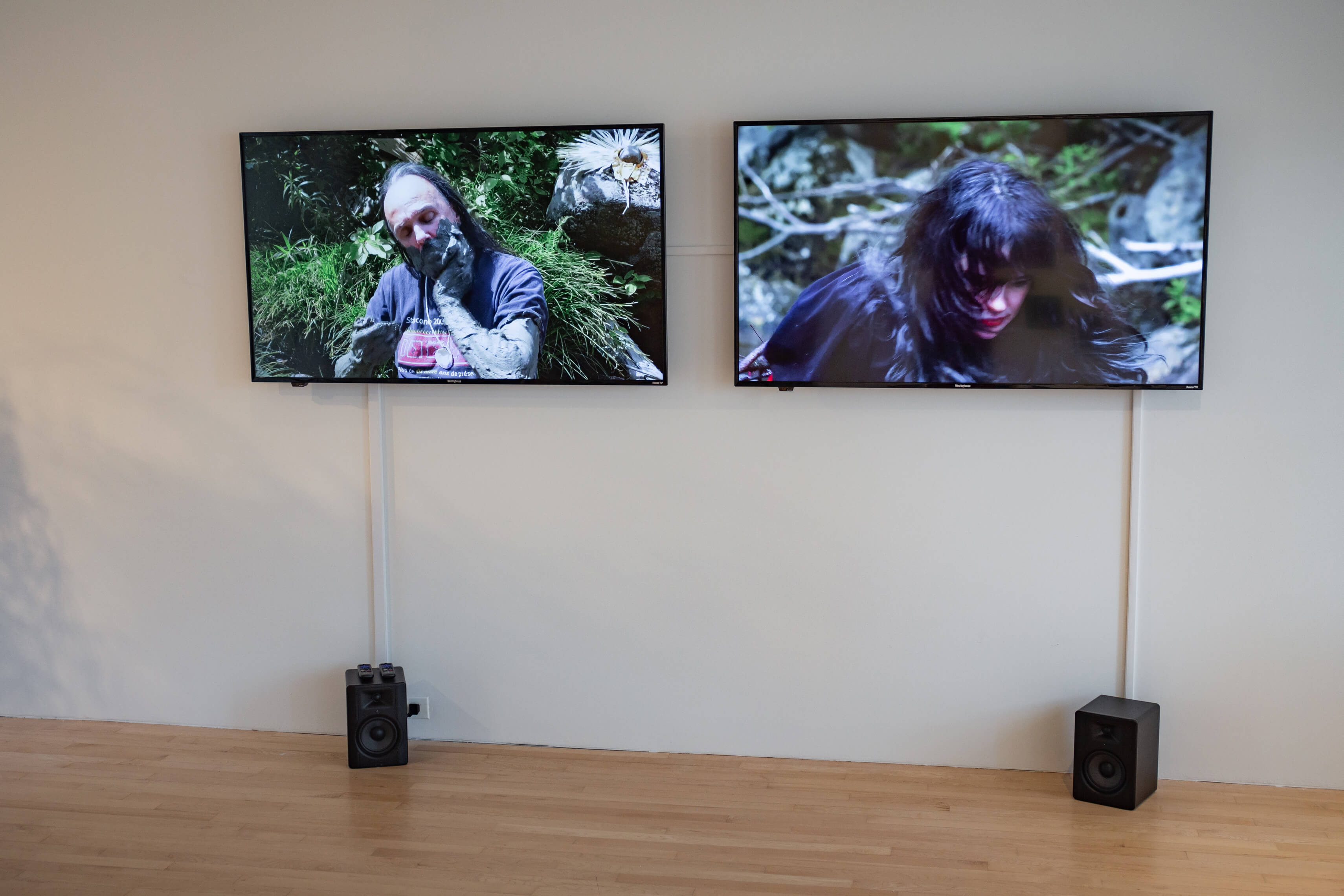
Annie Baillargeon and Teharihulen Michel Savard
Through performances and gestures, Annie Baillargeon and Teharihulen Michel Savard were inspired to create photos, videos and sculptures that served to welcome each others personae – the witch and the warrior – as a way to reclaim both myths and healing rituals. Jointly addressing the forms of violence and erasure long imposed on Indigenous people and women, the pair forge a dialogue between identities, giving each other the freedom to move through both individual and shared forms of expression. From the banks of the river running through the city, the artists encourage us to seek connection as a way to heal, soul and body, people and nature.
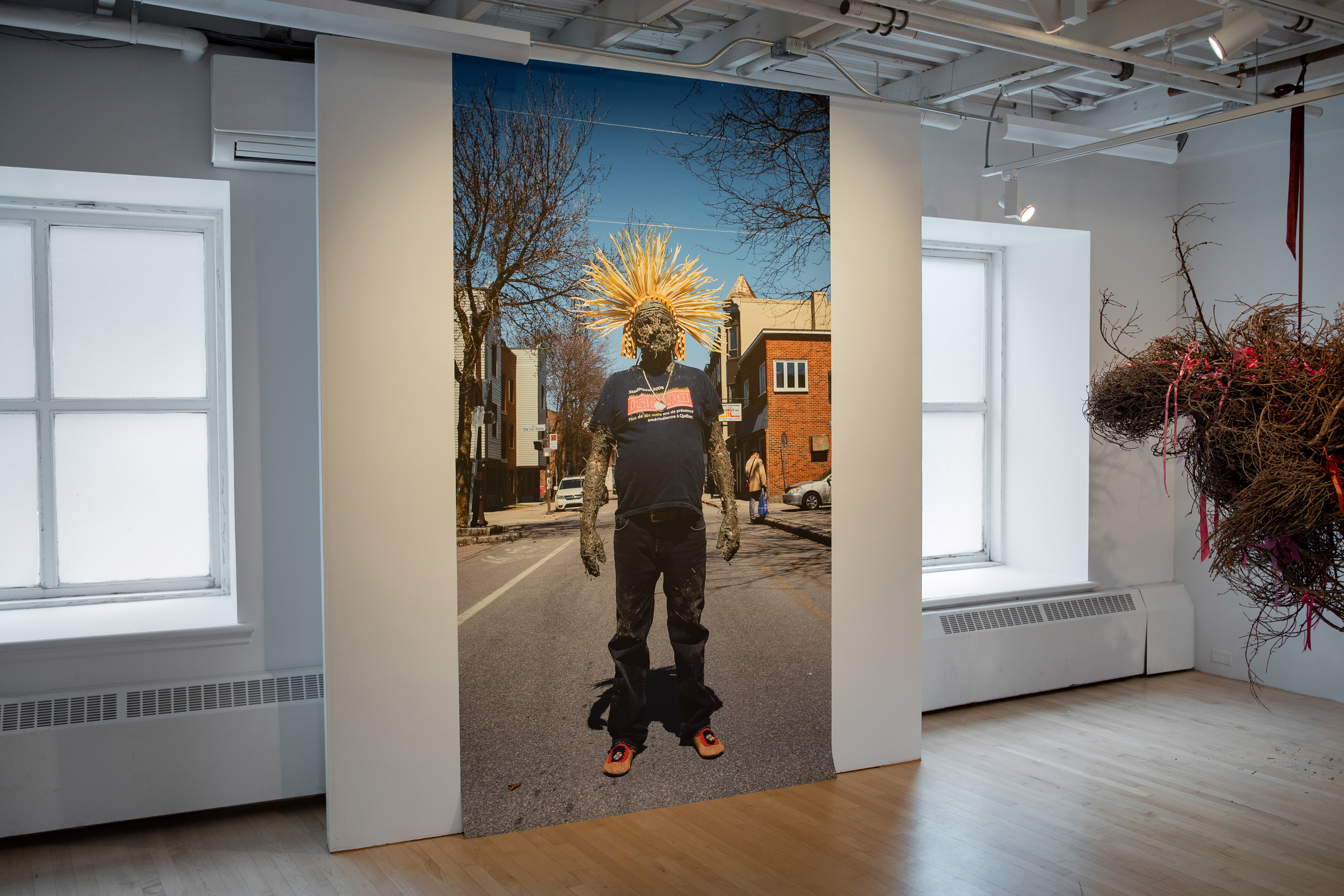
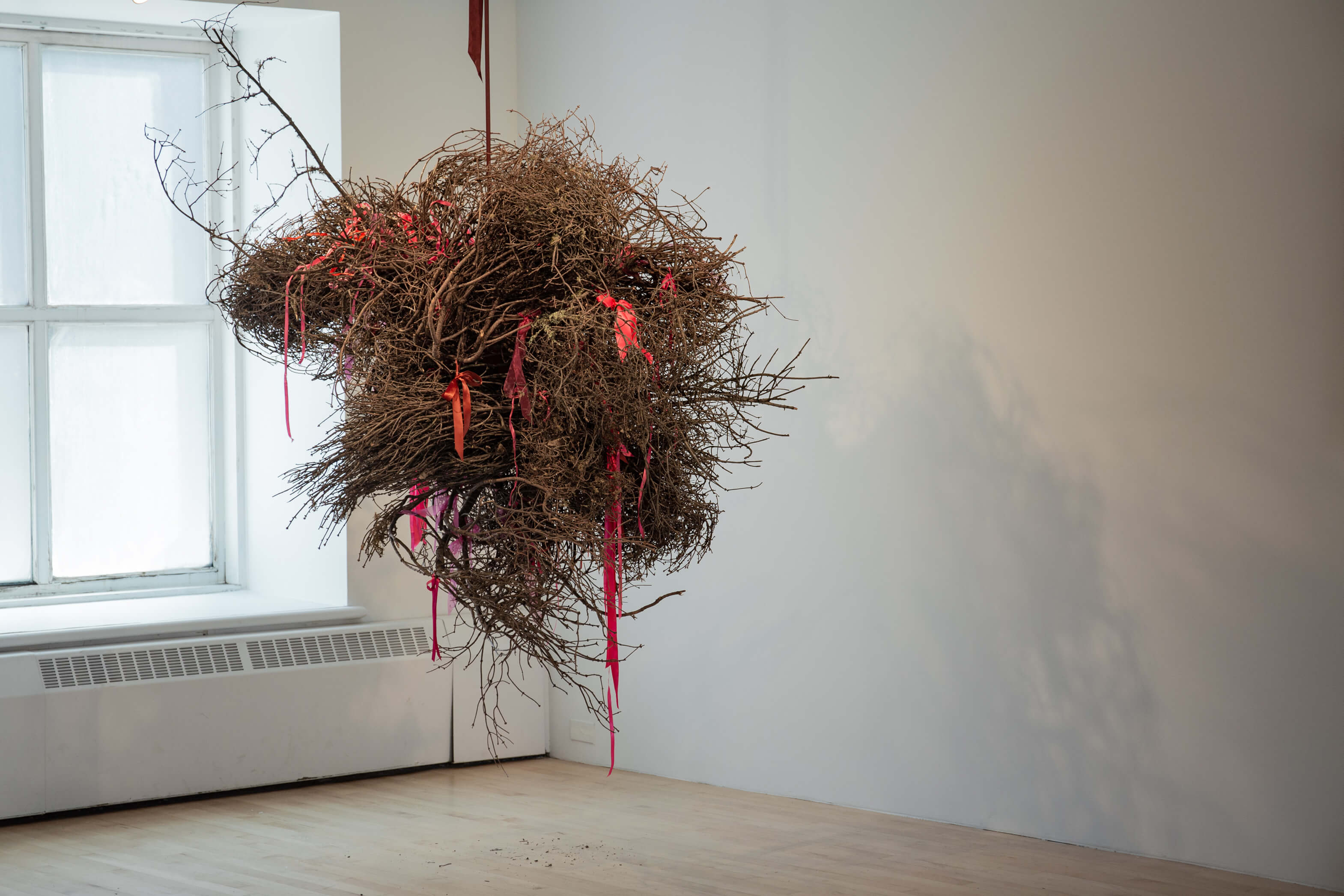
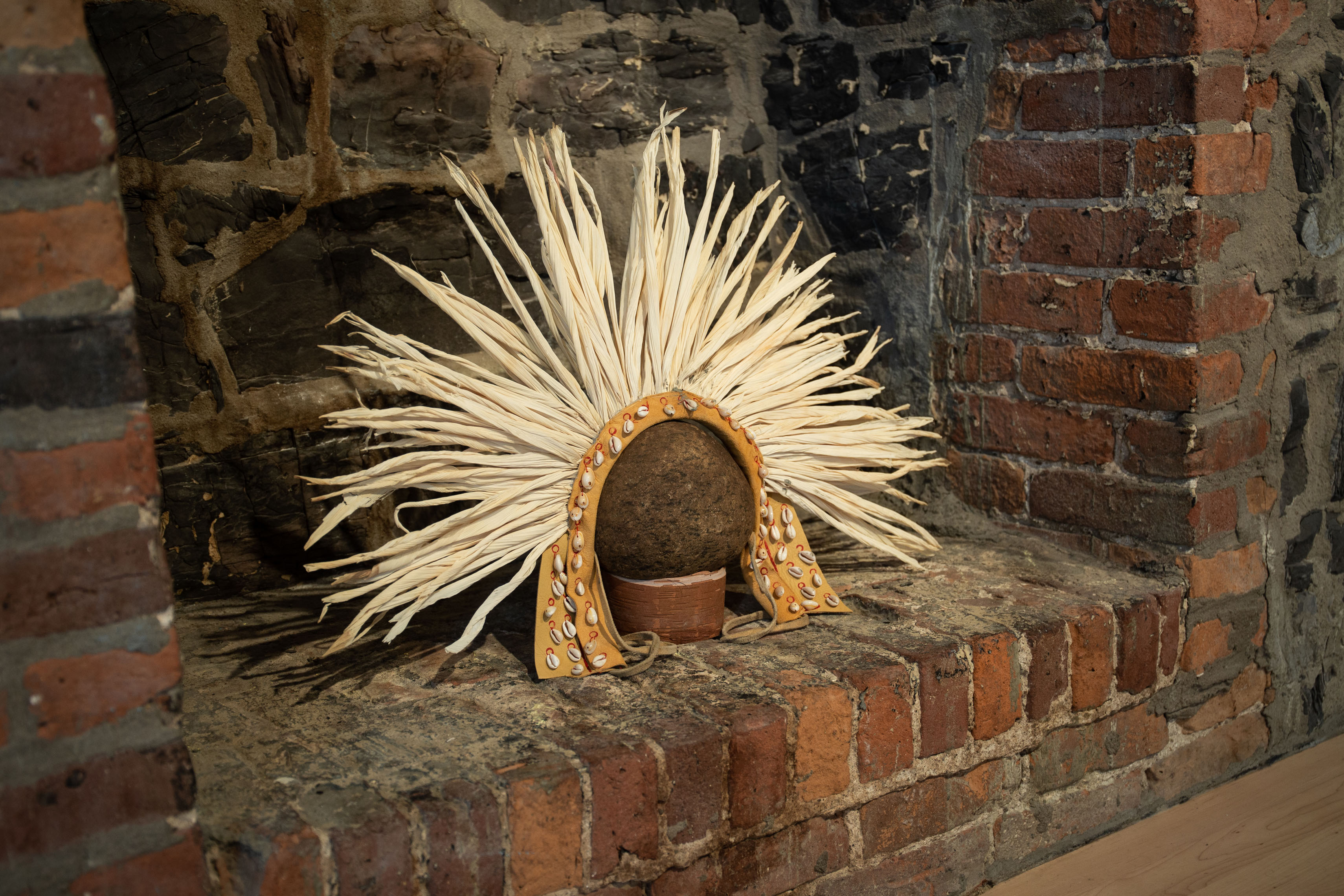
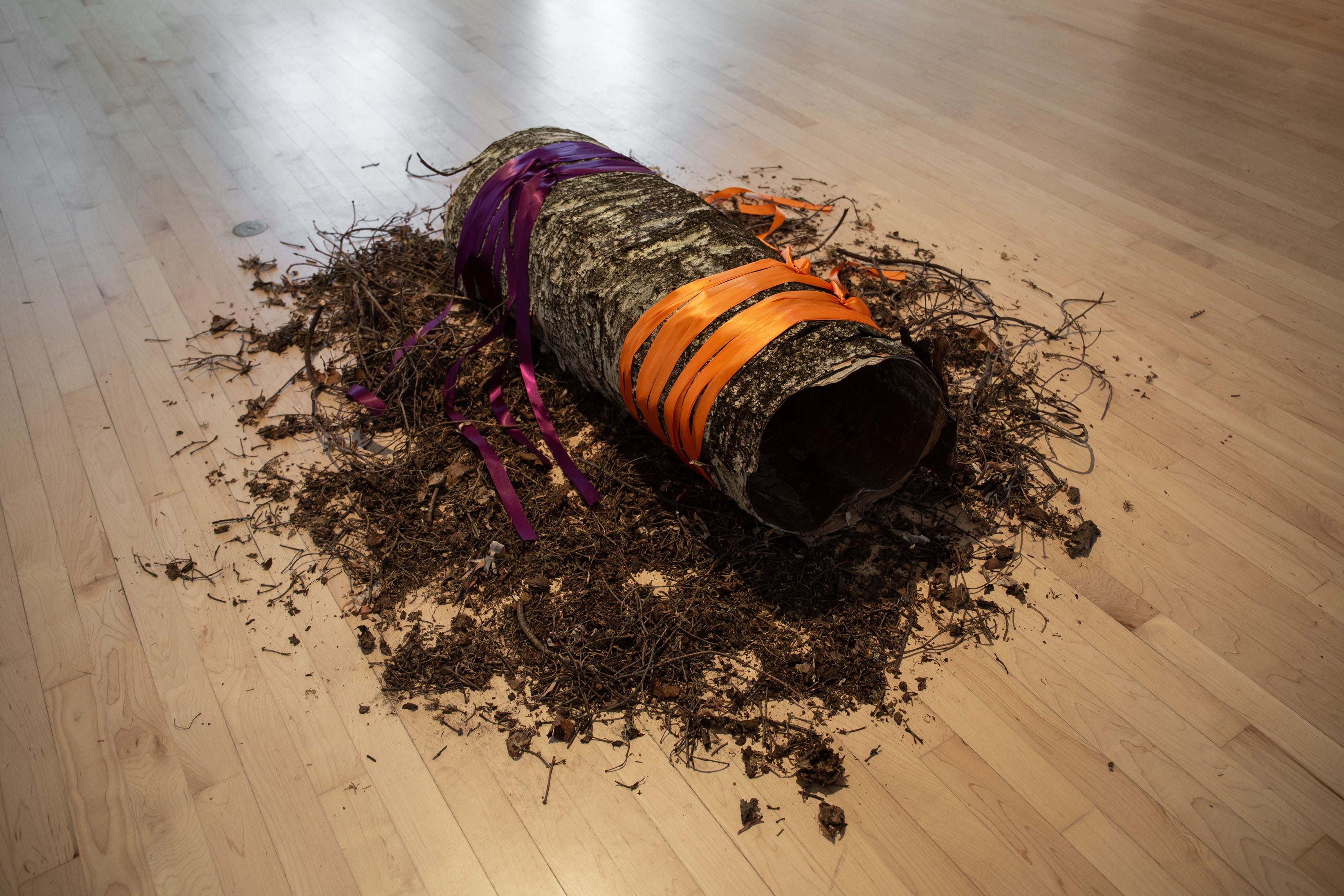
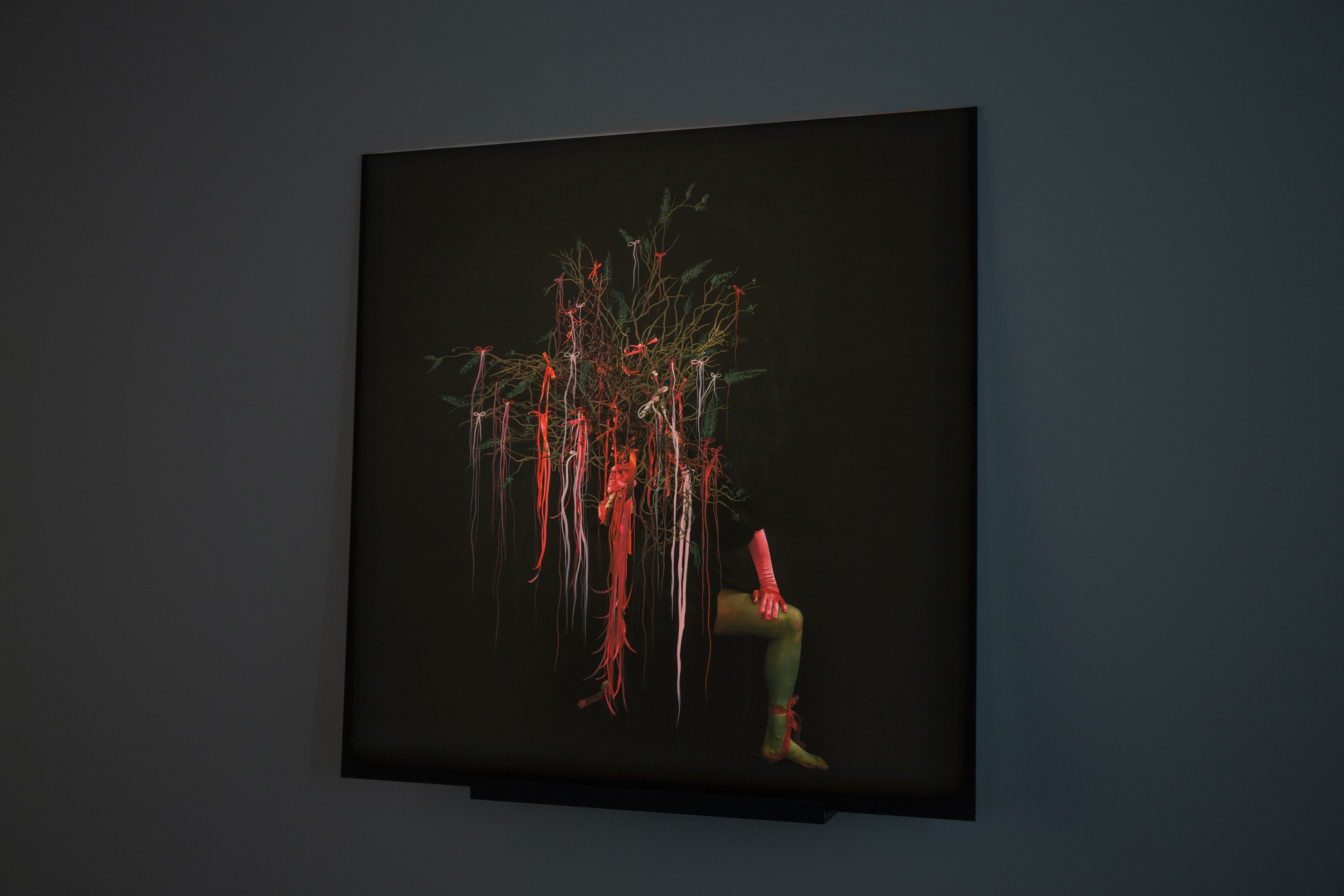
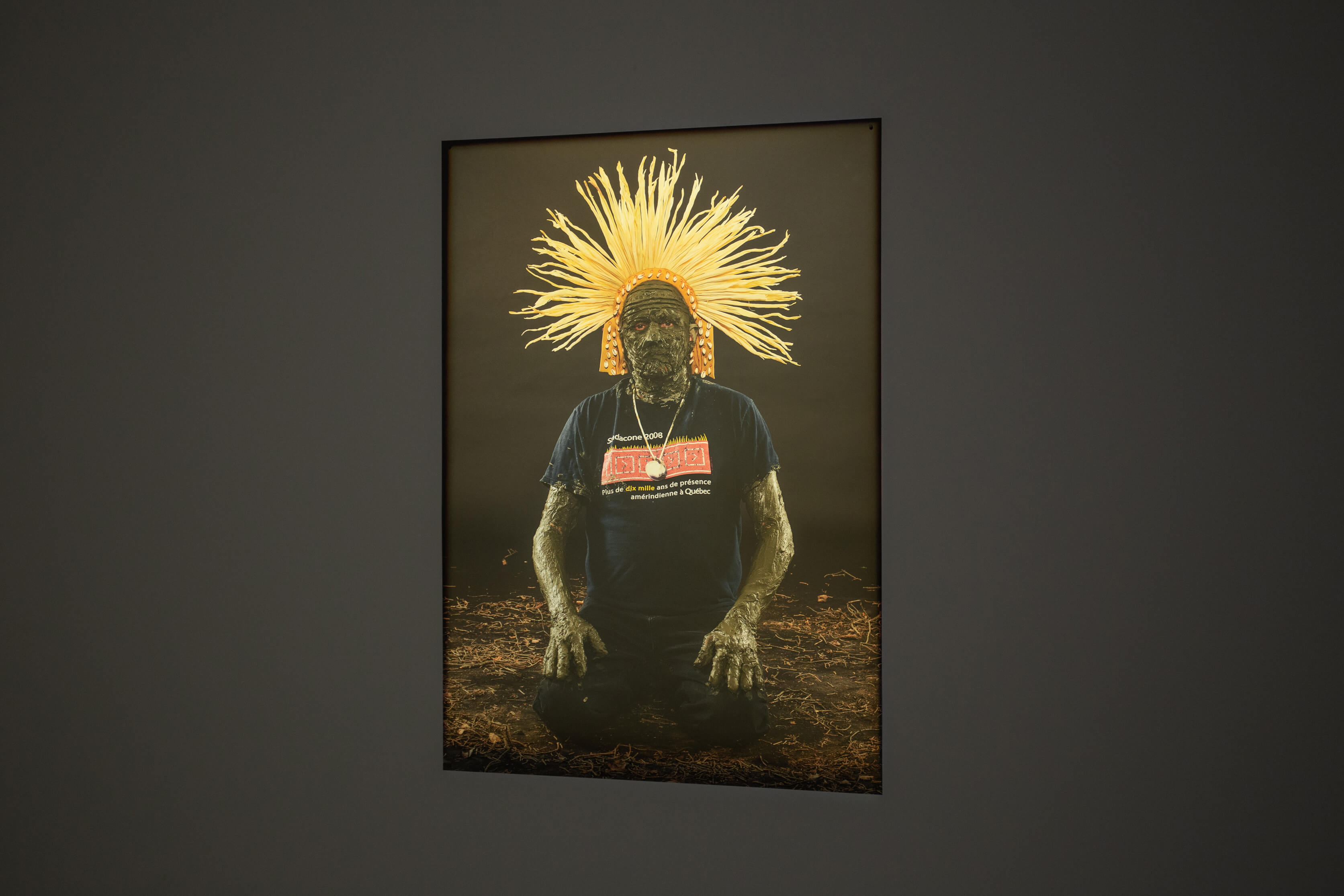

Anne Marie-Bouchard, France Gros-Louis and Manon Sioui
Presenting an assemblage of symbolic portraiture, each artist harvested assorted plants in familiar territories to create a communal garden. Allied by intentions of preservation and reuse, the artists resorted to environmentally friendly foraging methods, which moved them to further integrate environmental safekeeping as part of their artistic process. The cyanotype technique uses light to create an outline of the plants’ presence on paper, which is then rinsed to make images appear: this unveiling recalls the forming of friendships throughout the artists’ shared creation, moving them to call upon their ancestors and invite them to reconvene in this communal space.
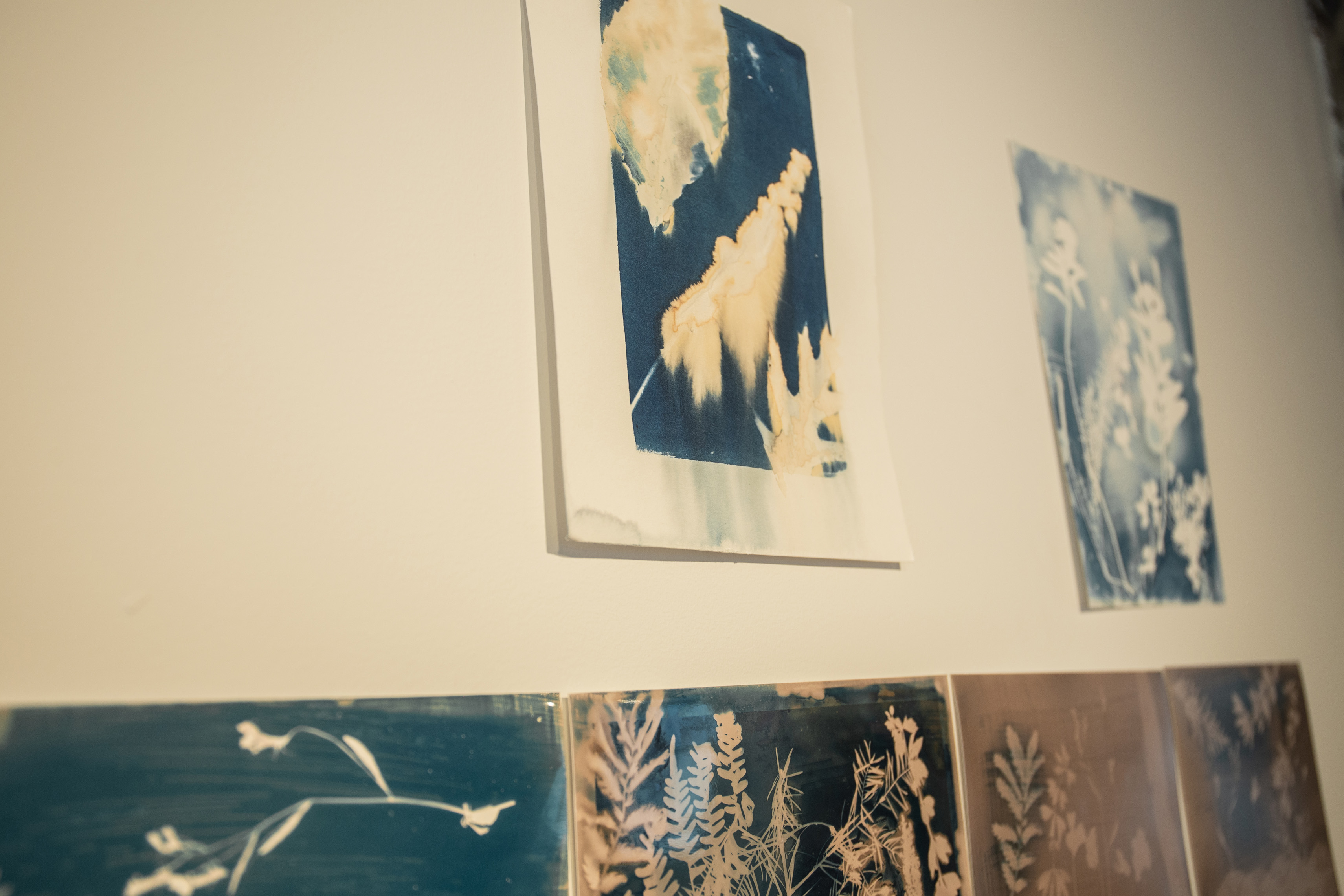
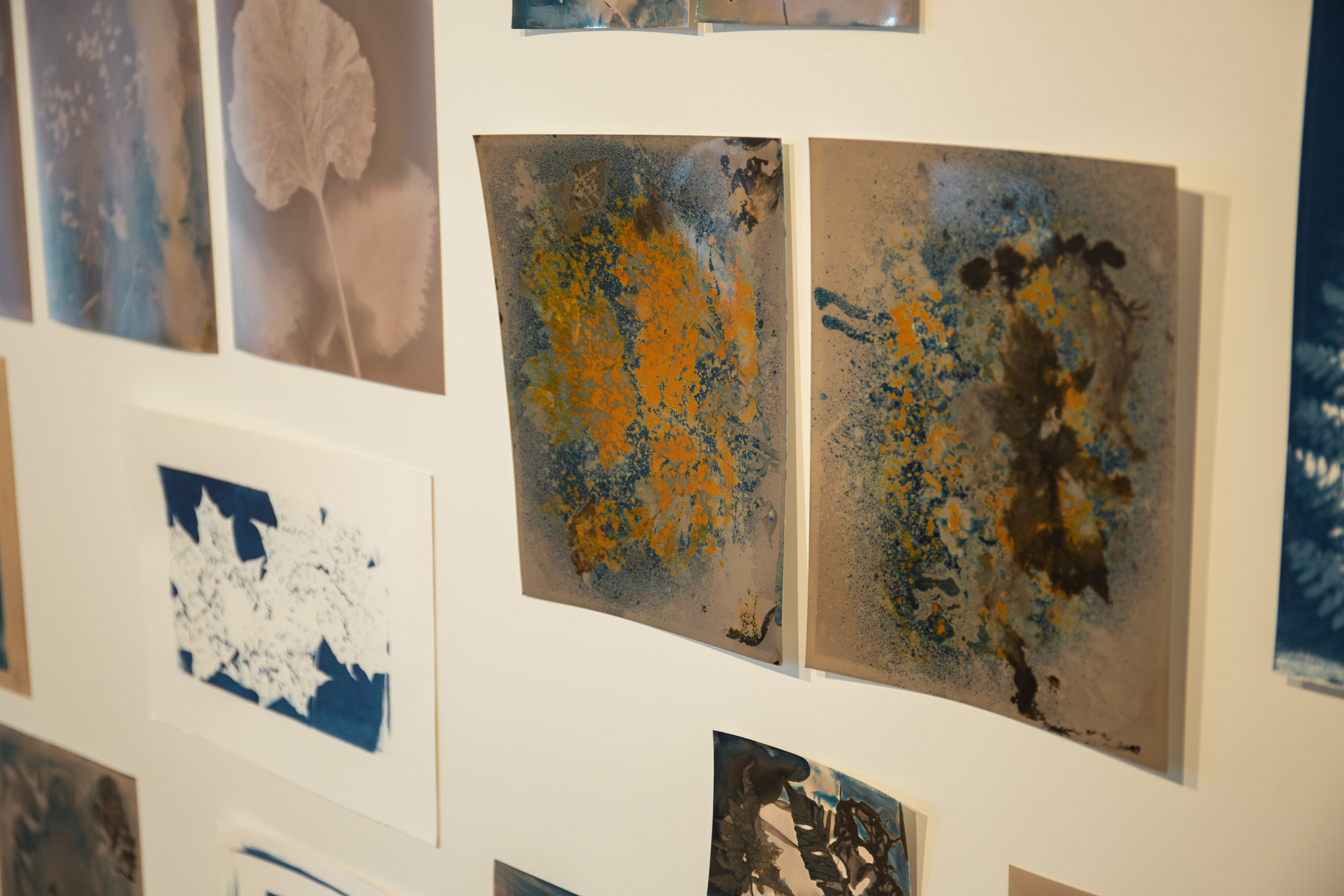
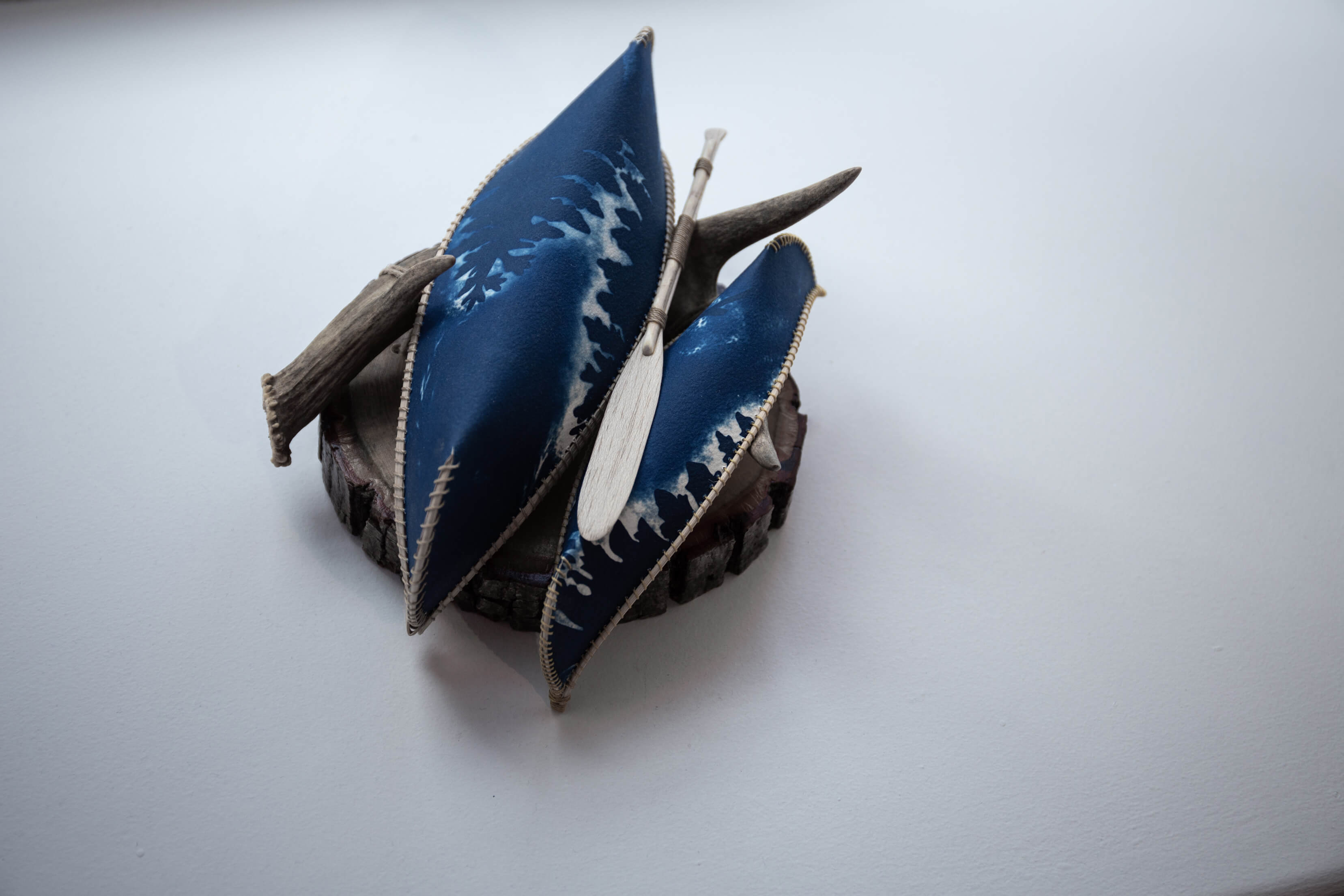
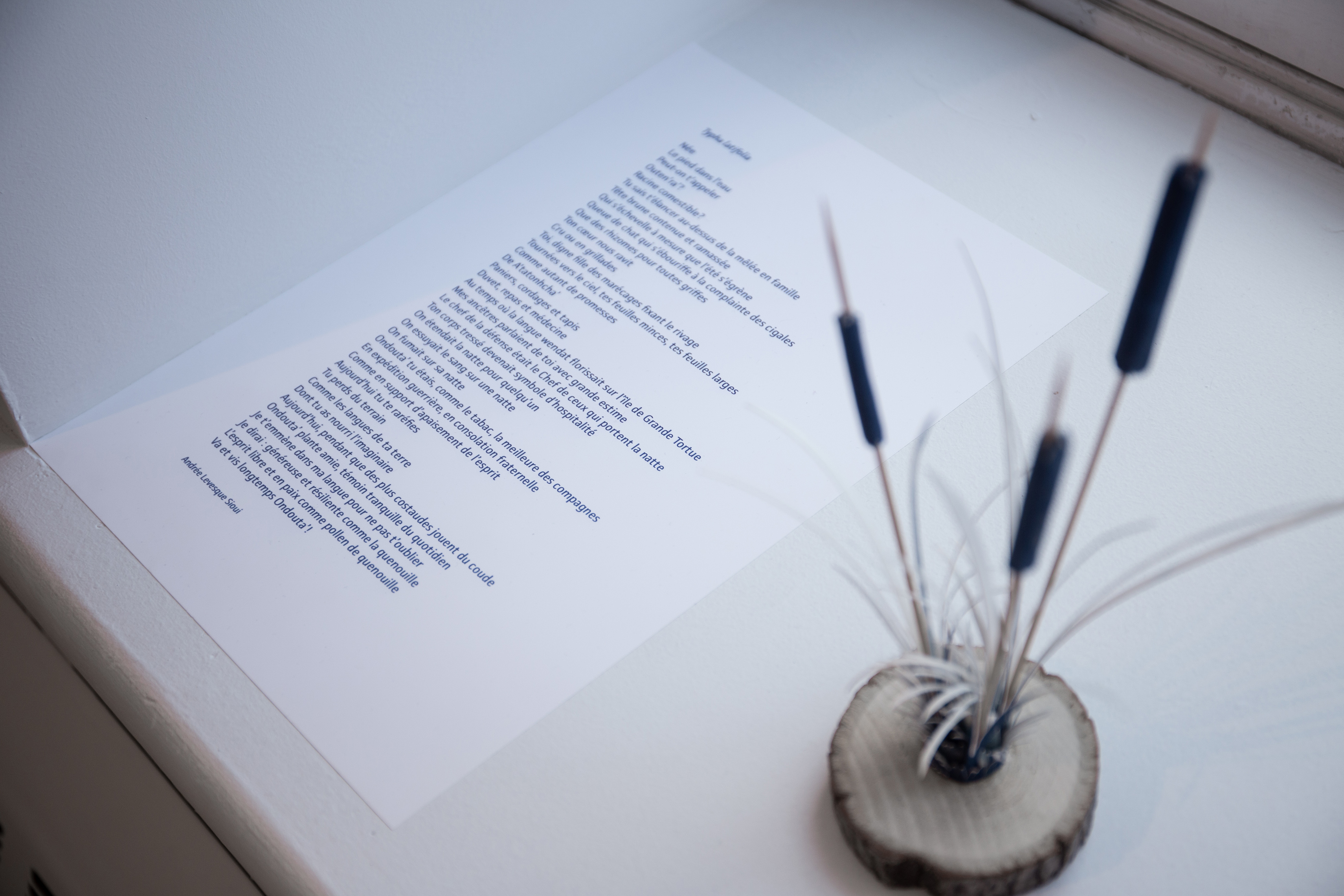
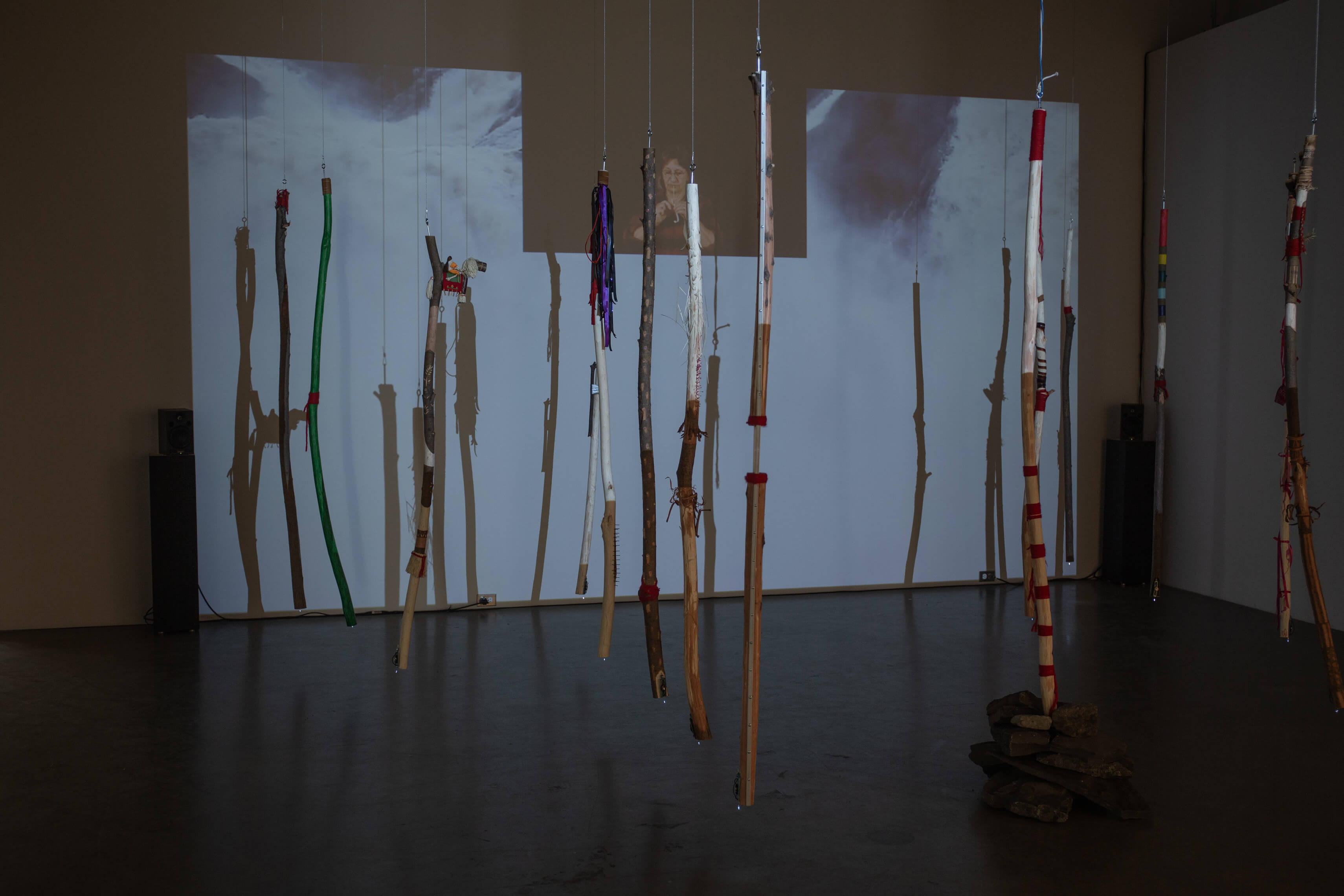
Alain-Martin Richard
La Parole entravée is an interactive installation created with the help of each of Yahndawa’s participants. Invited by Alain-Martin Richard to personalize willow branches and turn them into contact sticks, the members of the group were then asked to perform on film, revealing their own interpretation of what it means to block or liberate speech. In the gallery, the willow sticks are hung to mimic a forest under which the Pleiades shine. Their shadows lengthen to blend into the projection of the waterfall, from which ambient sound emerges and grows overbearing at times. The shifting soundscape serves as a reminder that in the cascading strength of water, overflowing and regenerating, speech can be renewed.
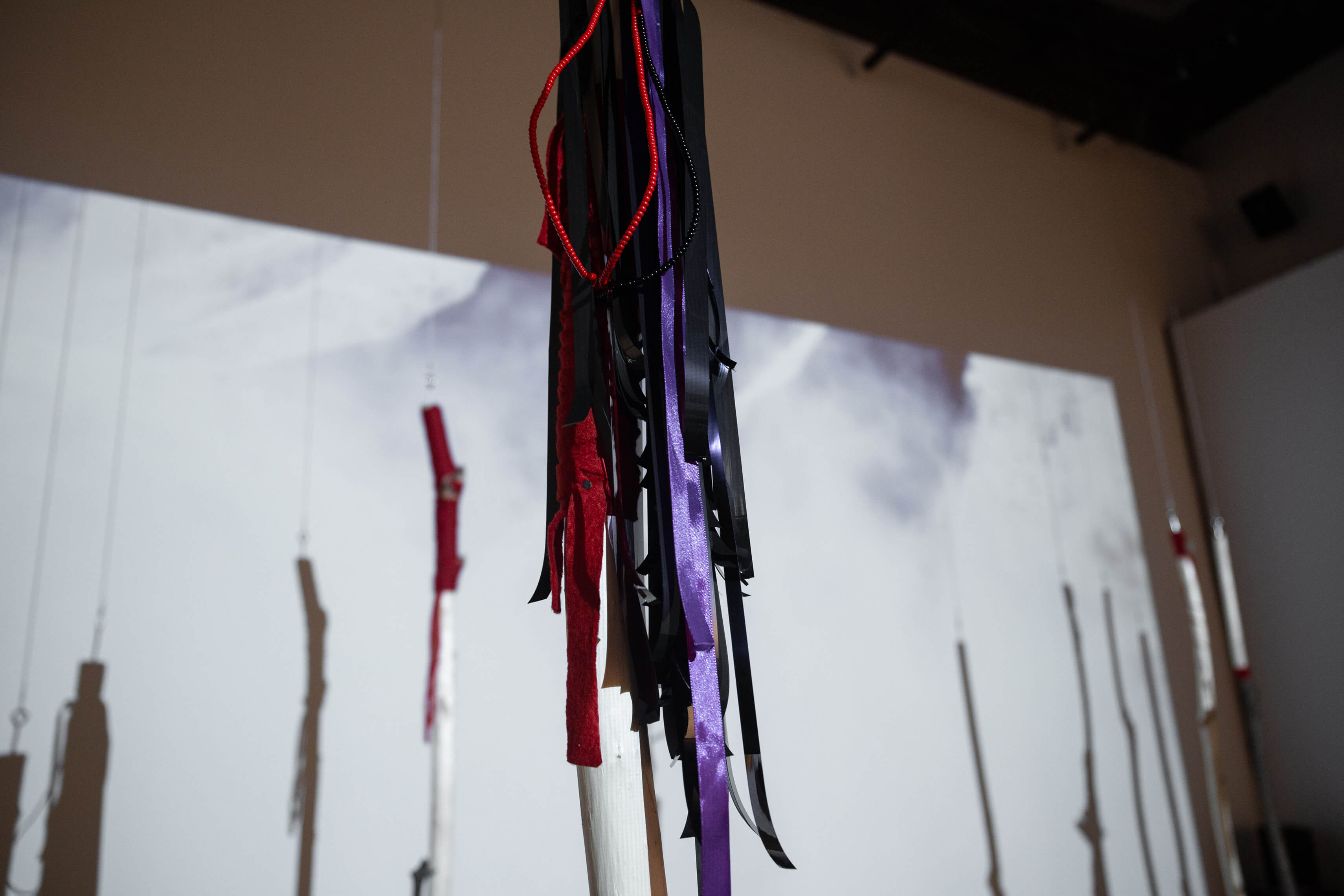
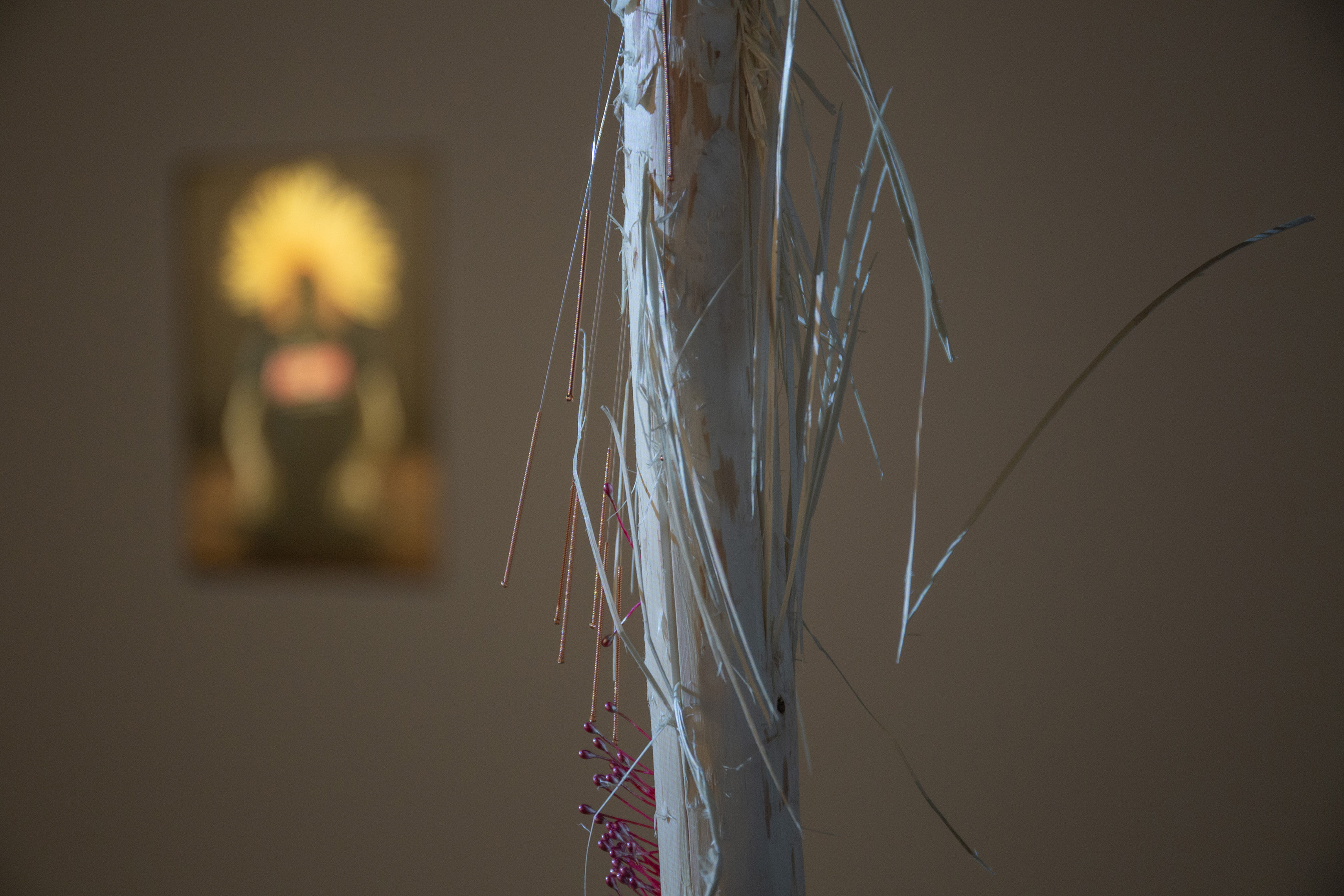
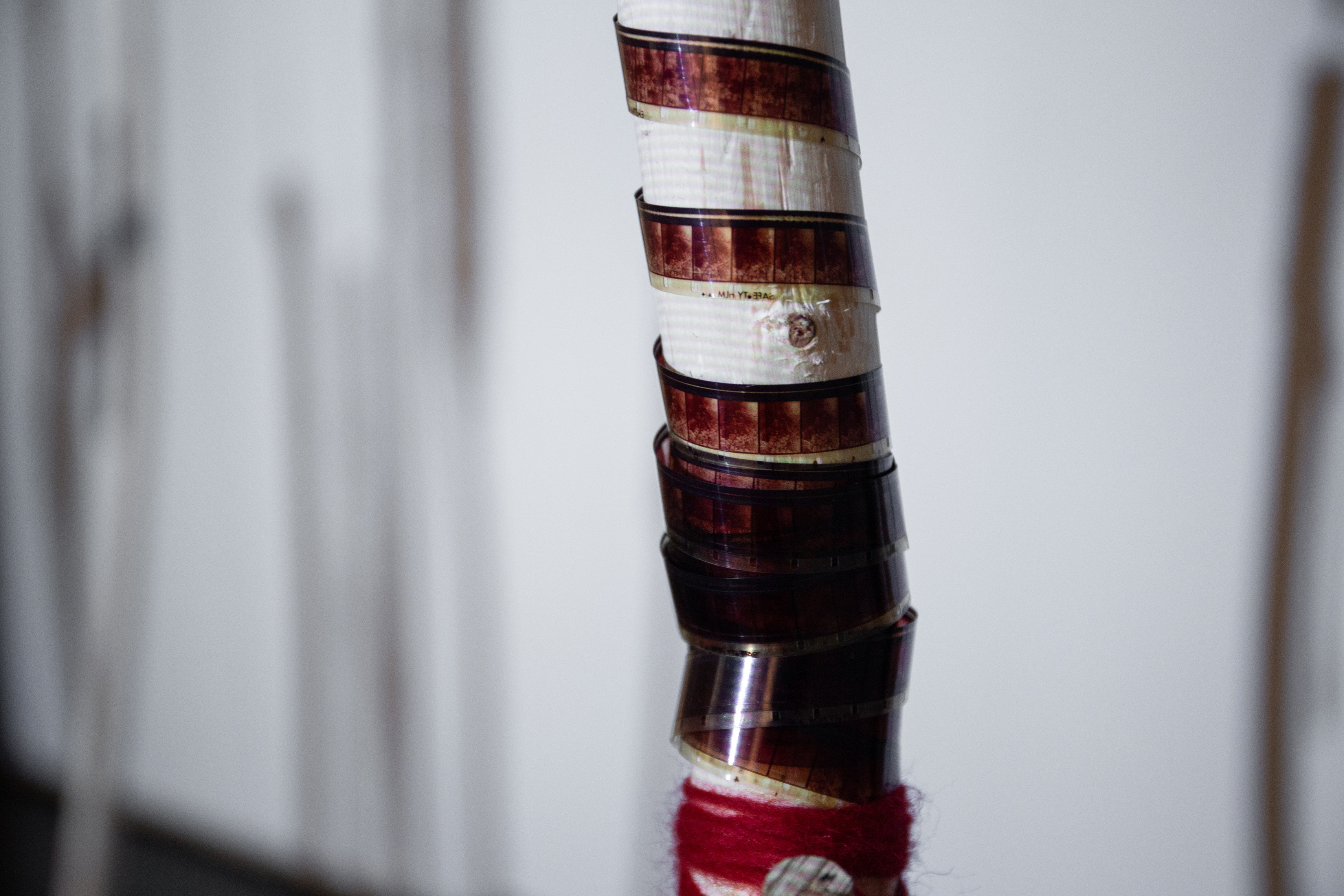
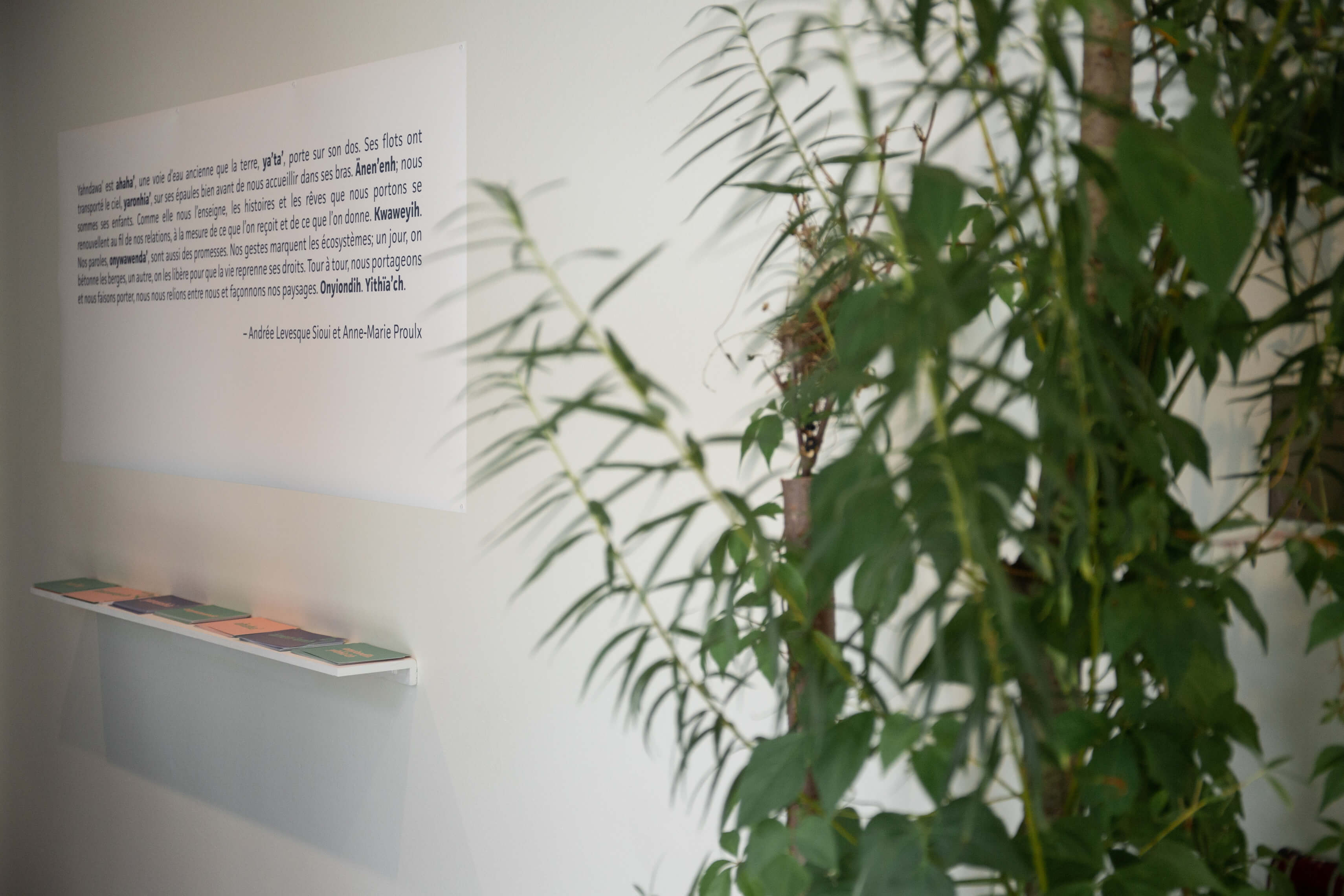

Alexis Gros-Louis
Alexis Gros-Louis incorporates multiple references to Wendat territory and culture to create abstract works that question our ability to extract ourselves from history and memory, especially once a wound or a barrier has formed. His work invokes different forms of distance – physical, historical, political, economic and cultural – all interjecting with our understanding of territory, and what it truly signifies. These works also connote the artist’s path, travelled as a way to reconvene with the ancestral territories of his people, and through which his labour leads him to a slow recovery of the misplaced parts of his identity.
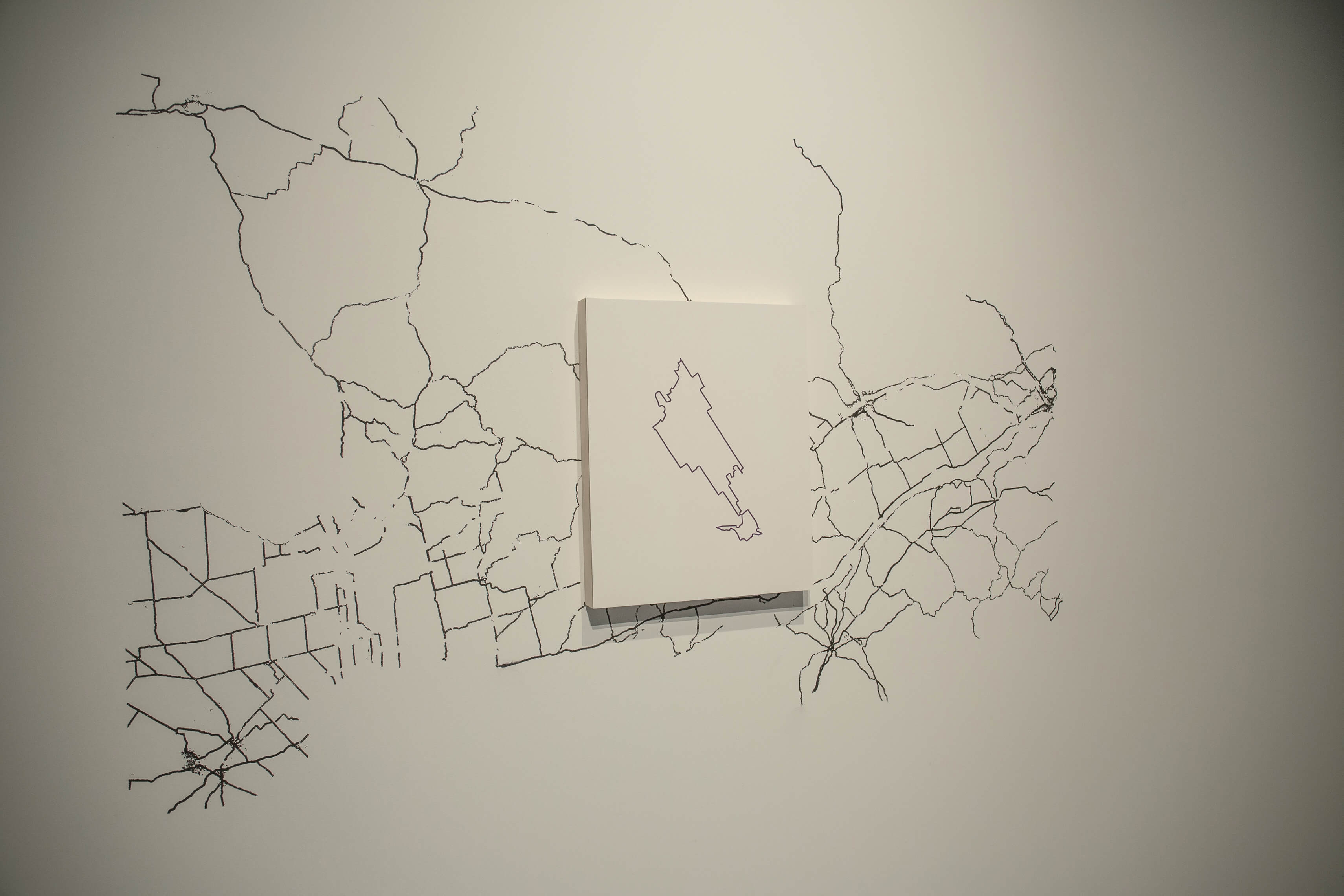
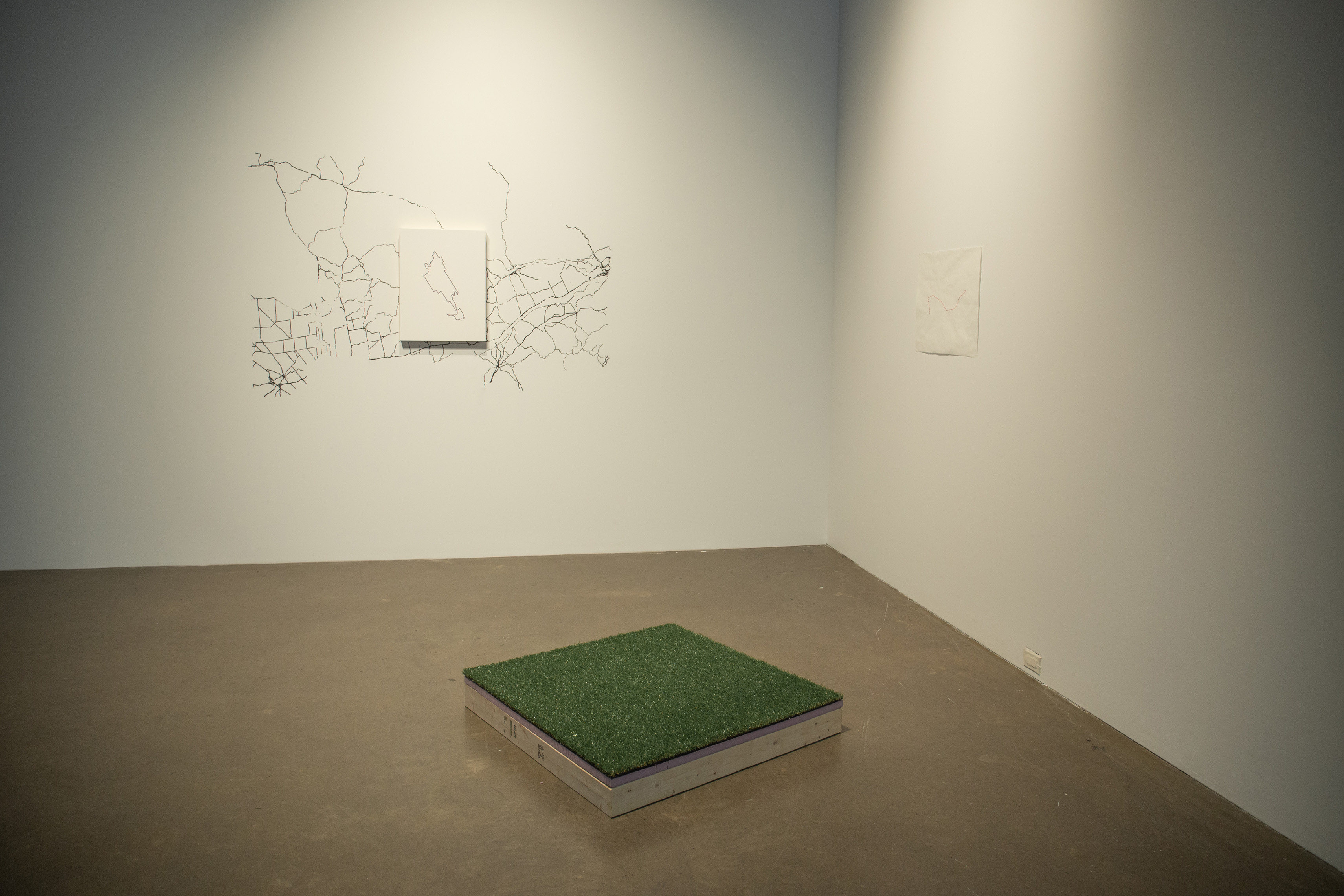
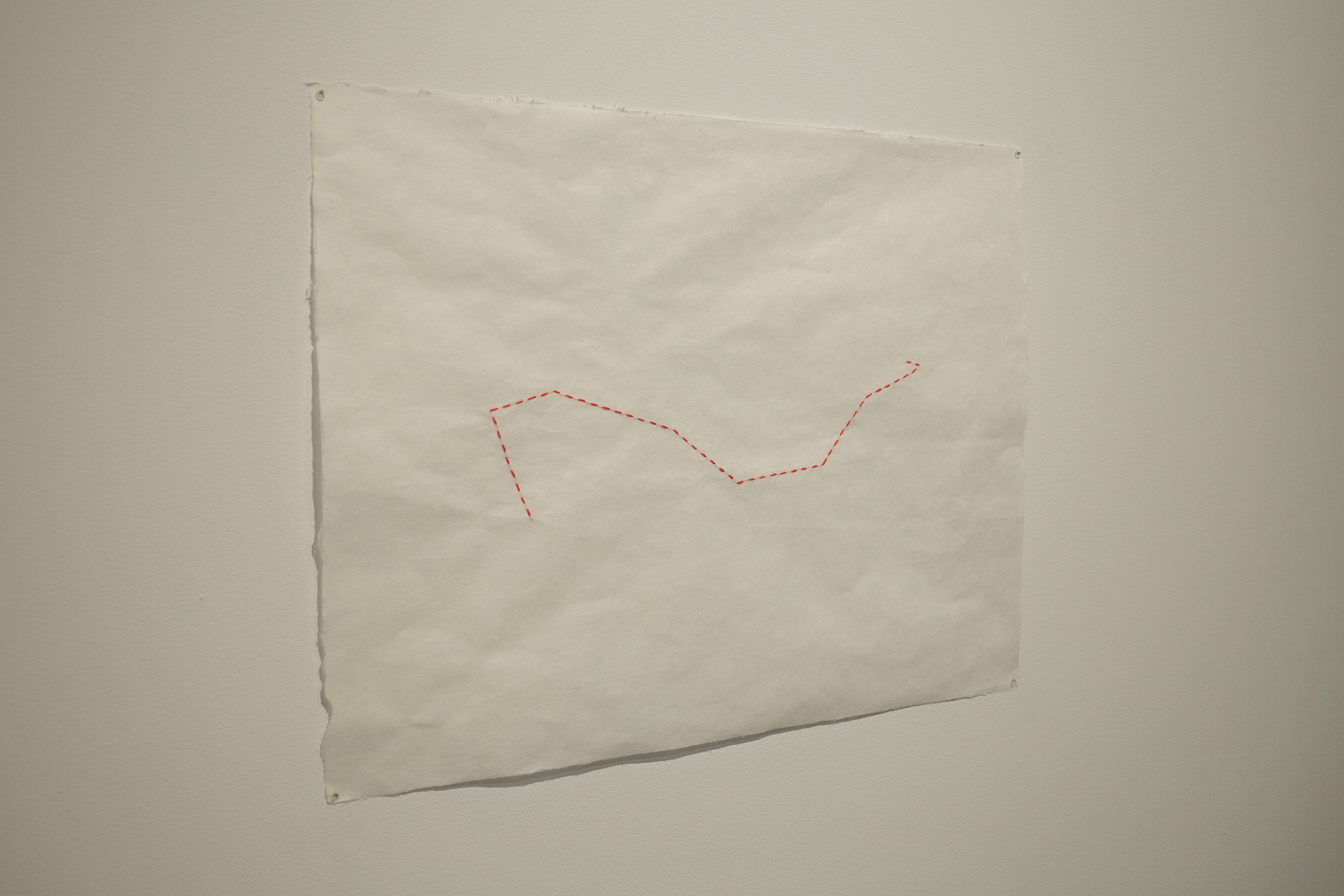

Nicolas Renaud
In Onyionhwentsïio, a portage trail conveys how back-bending weight can stem from life’s necessities as much as it can come from centuries of history. As a personal depiction of Métis identity, Onyionhwentsïio directly ties in with Renaud’s other work in the gallery, a second video installation that refers to a Catholic wampum made by Wendat women in 1678 that was, upon completion, gifted to the Chartres Cathedral where it is still preserved today. Despite the Latin lettering that denotes the object’s Christian character and reflects a certain cultural assimilation and submission to the Church, Renaud goes beyond the surface in order to identify the ancestral Wendat beliefs in the object and draw attention to its original use as a conduit for speech, political agreement and spiritual communication.
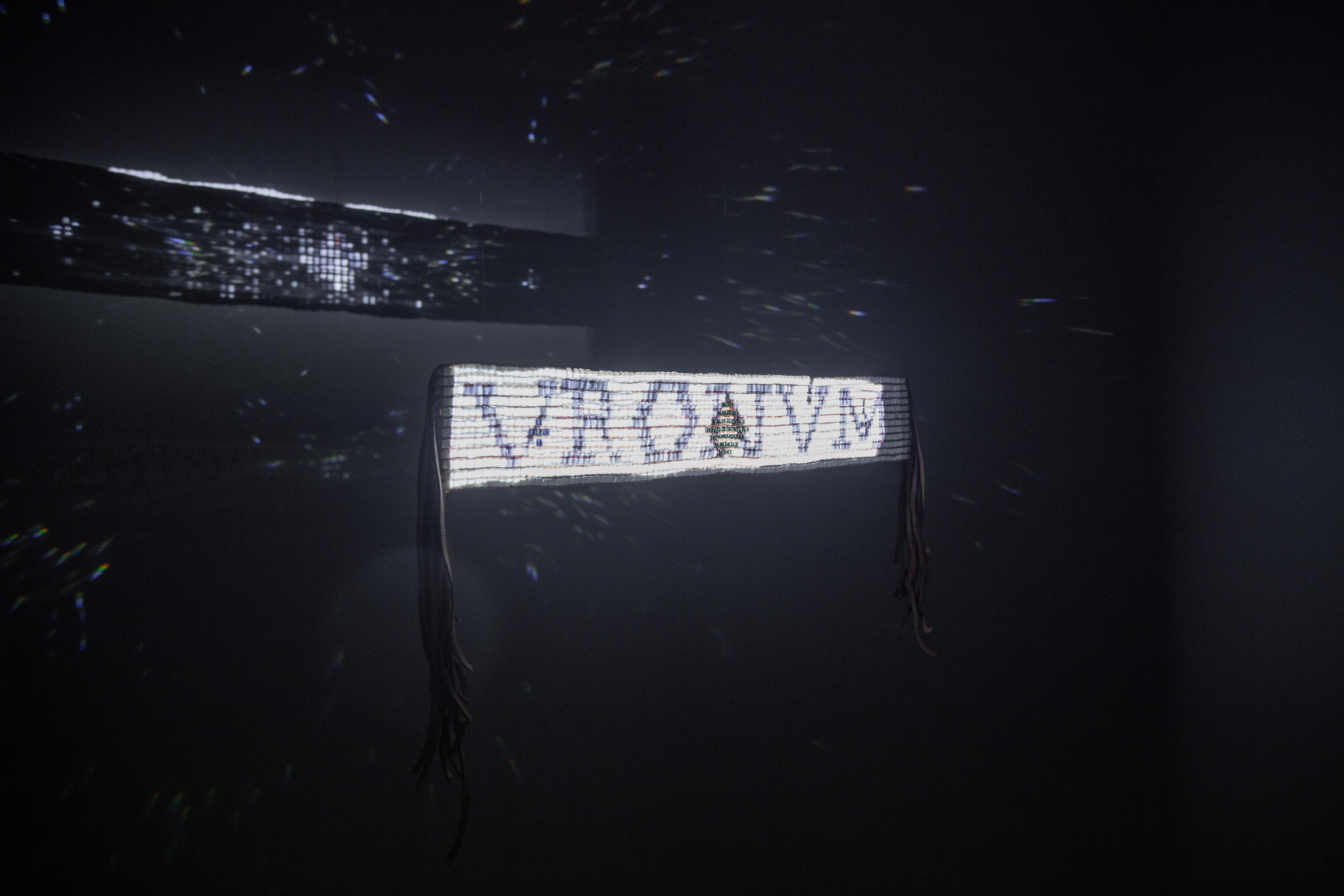
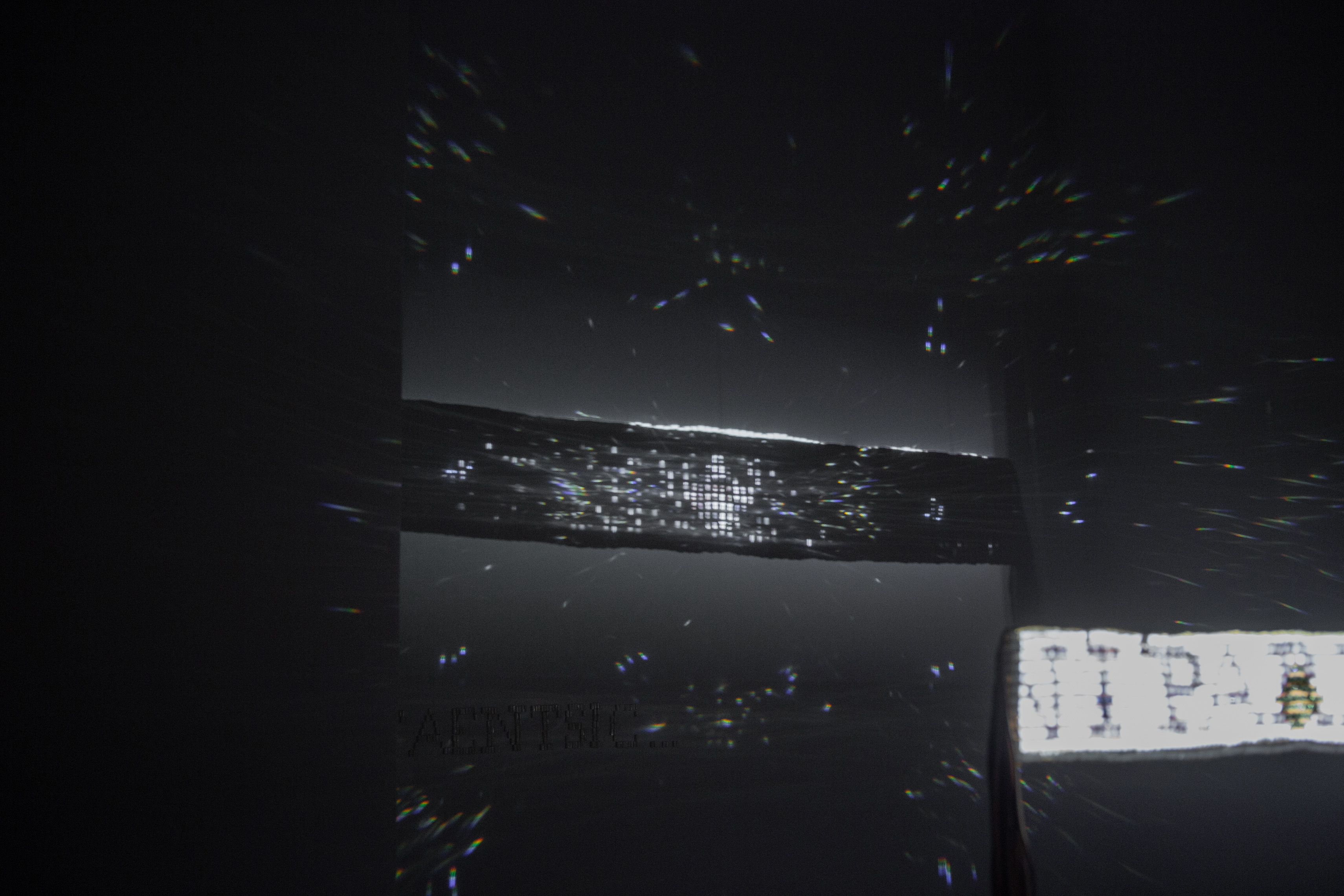
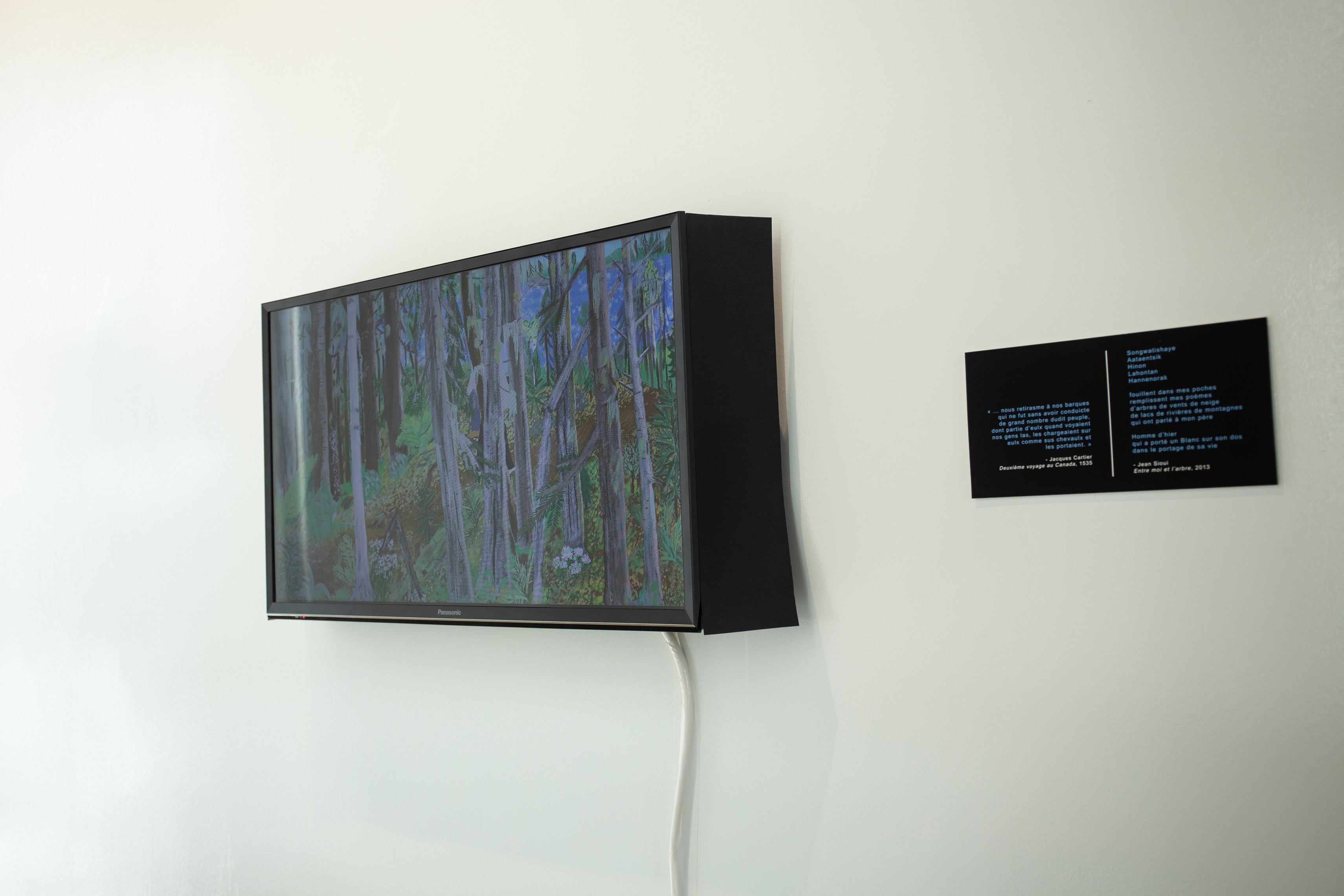
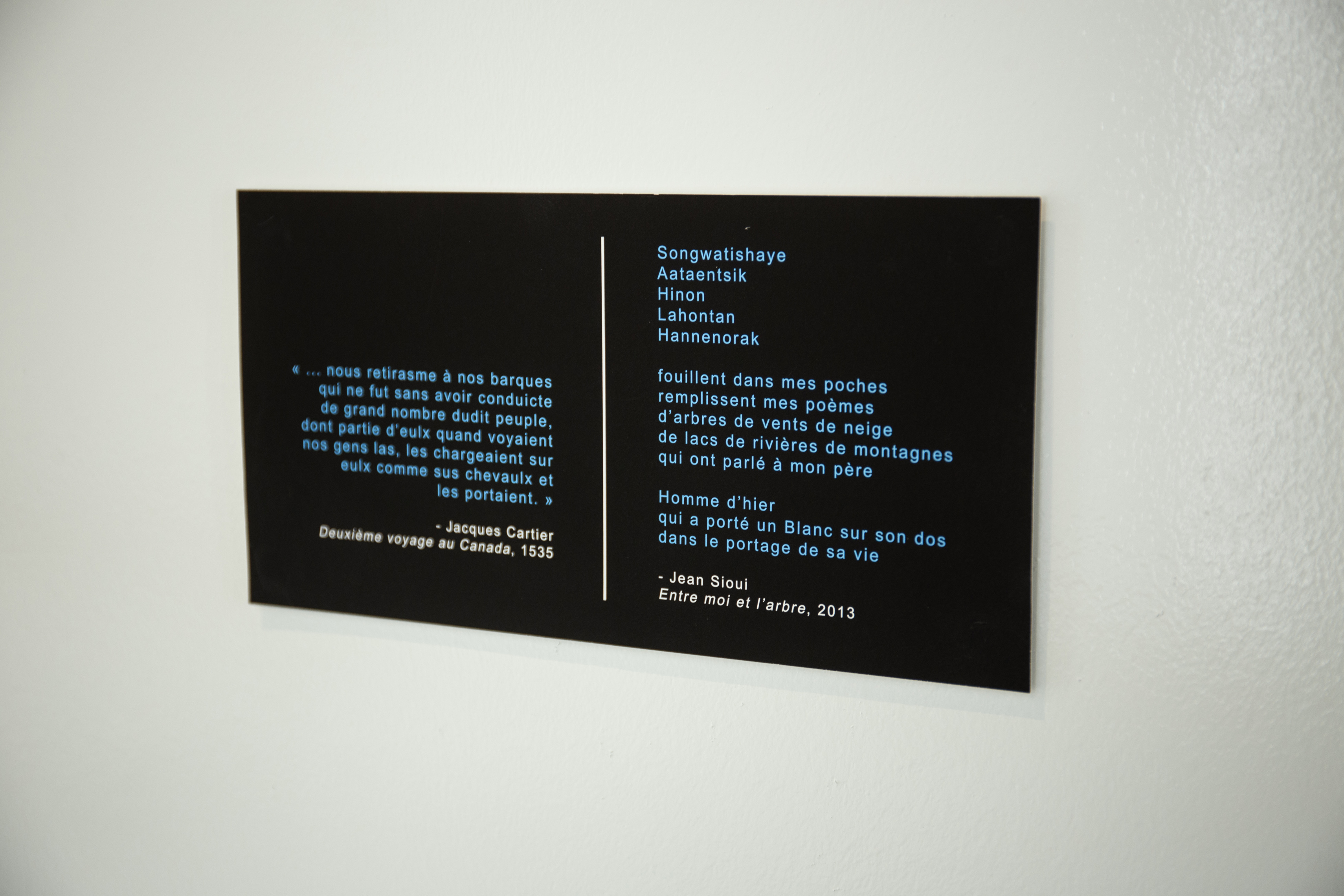

Andrée Lévesque Sioui, Érika Hagen-Veilleux and Jeffrey Poirier
Born out of a shared creation that echoes the inherent forces of nature and human encounters, the handmade arrowhead sash reveals the painstaking labour required by the three artists to make such a work. The main structure, produced by Poirier, rises like a fragile monolith and functions as a reference to the immeasurable forces of nature. The interlaced textile work introduces traditional techniques of finger braiding in the arrowhead style, long practiced by Andrée Lévesque Sioui, who taught them to her two creative partners. The studio notes provided by Érika Hagen-Veilleux accompany the structure, acting as a timeline of gestures, intentions and experiences shared between the artists.
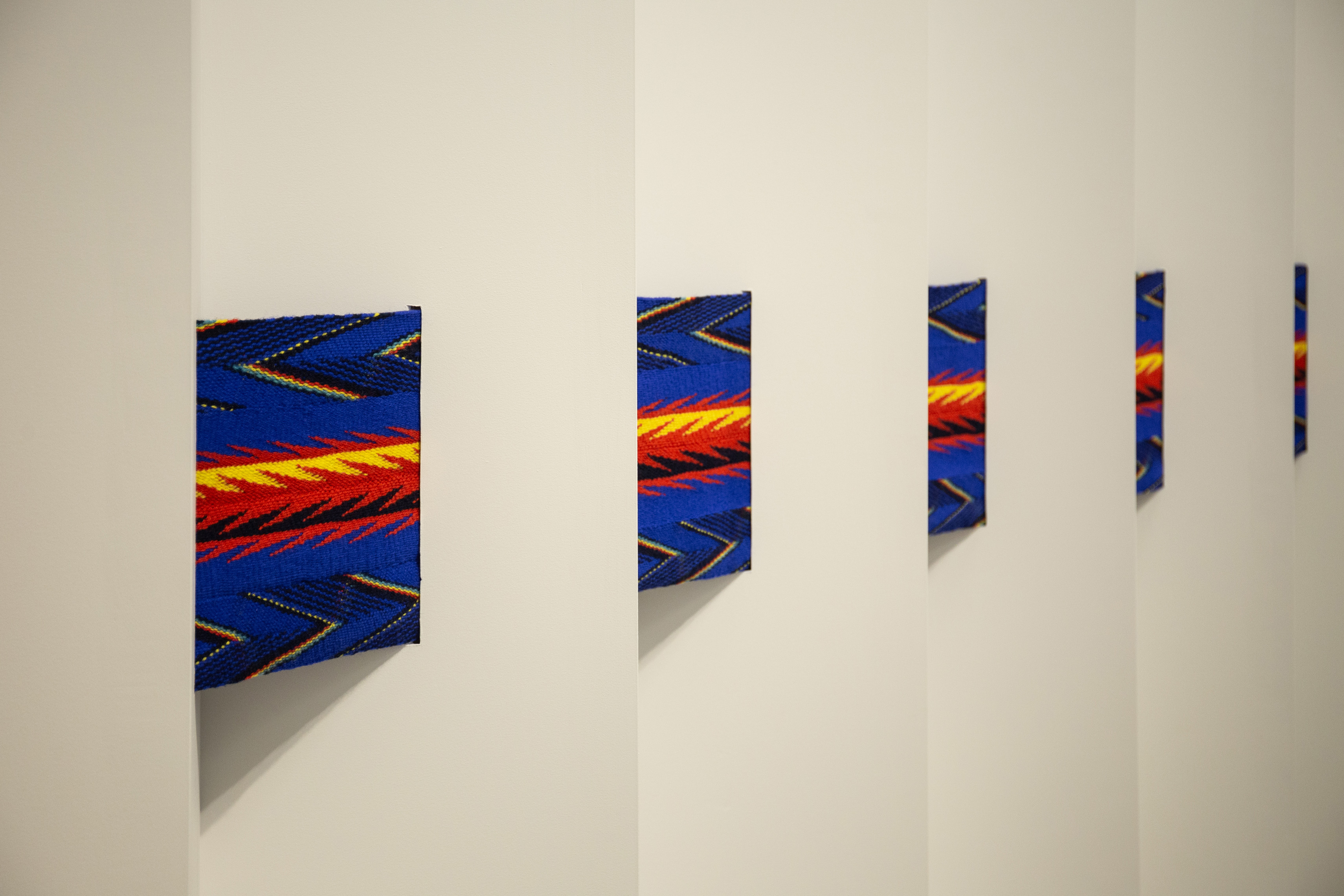
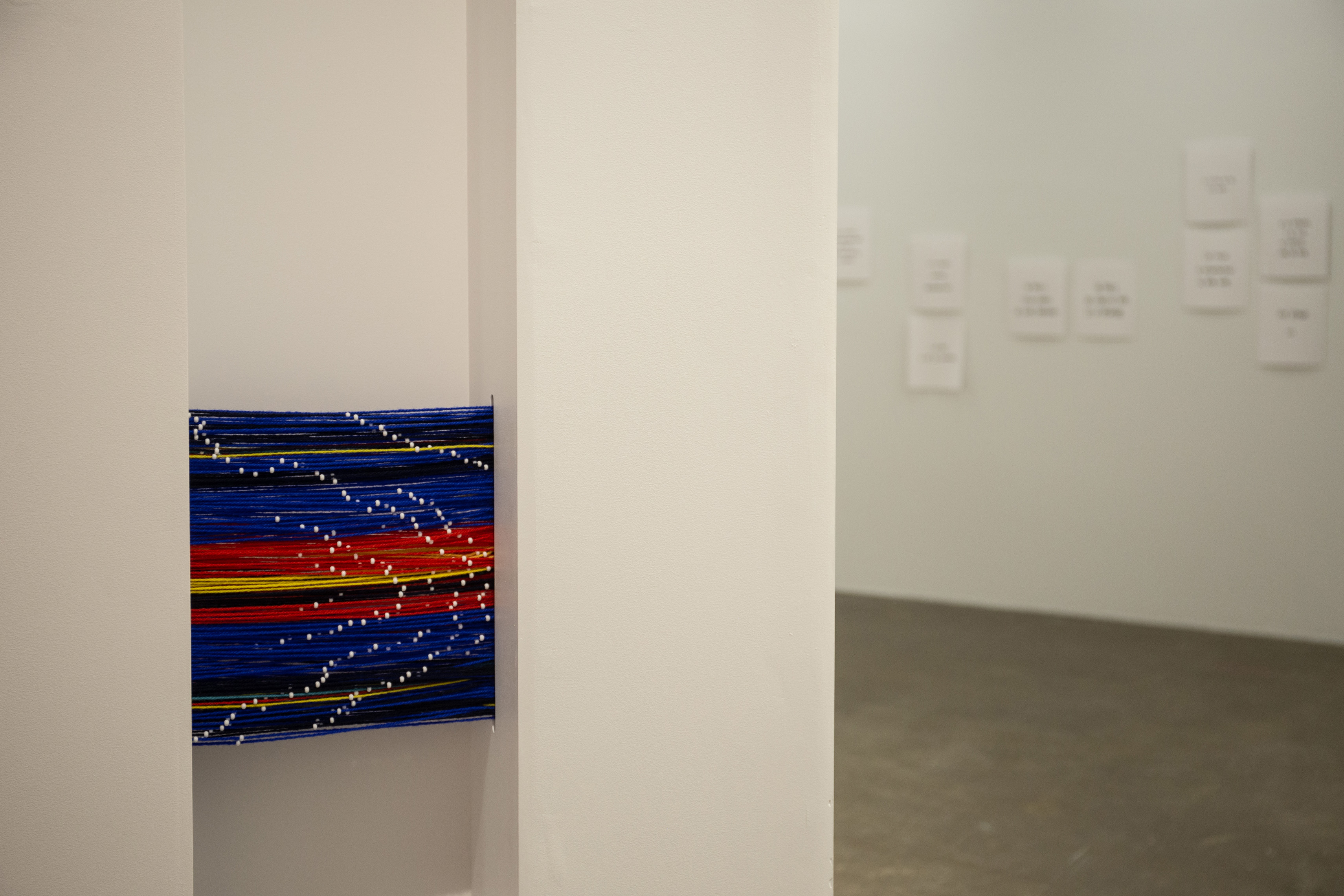
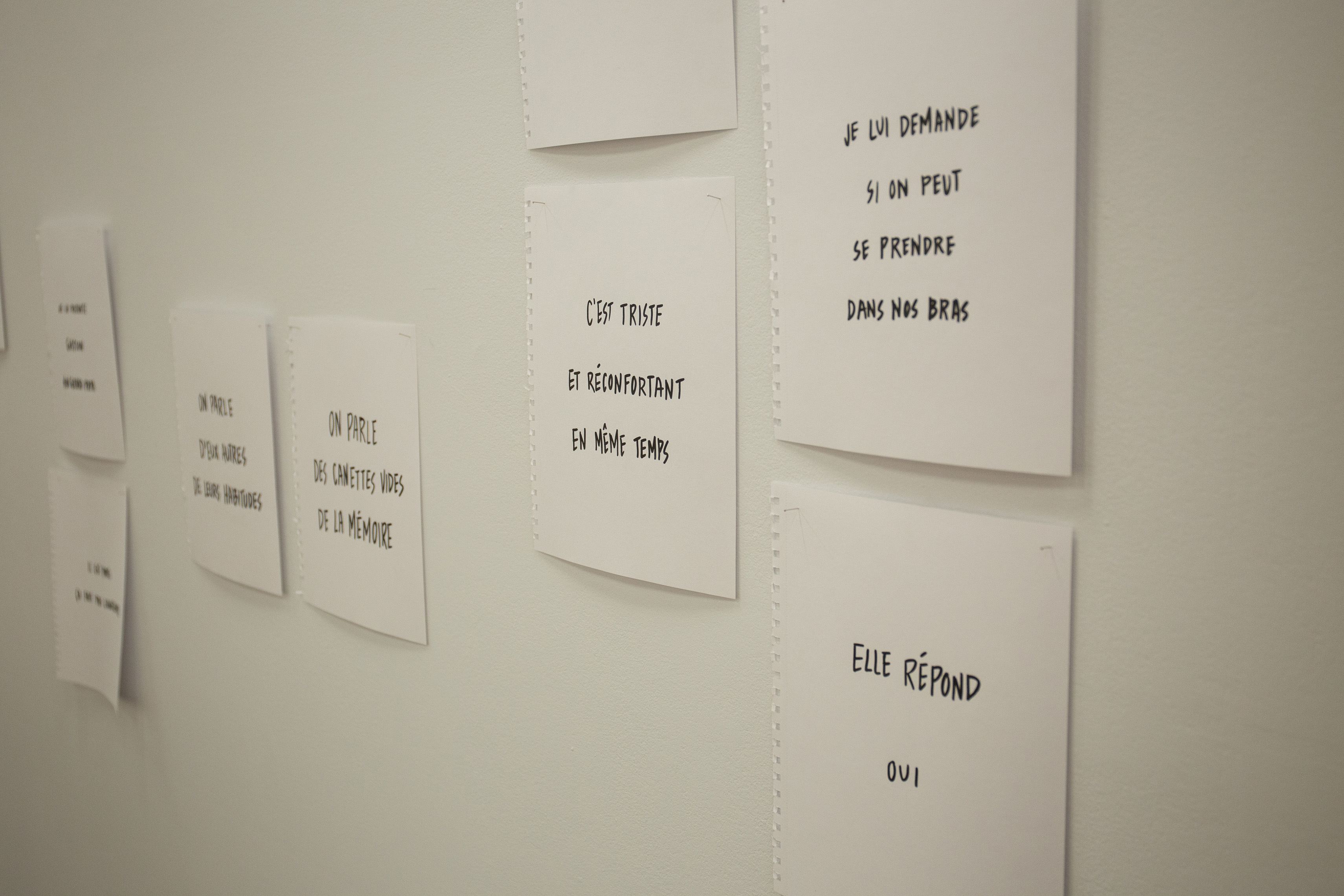
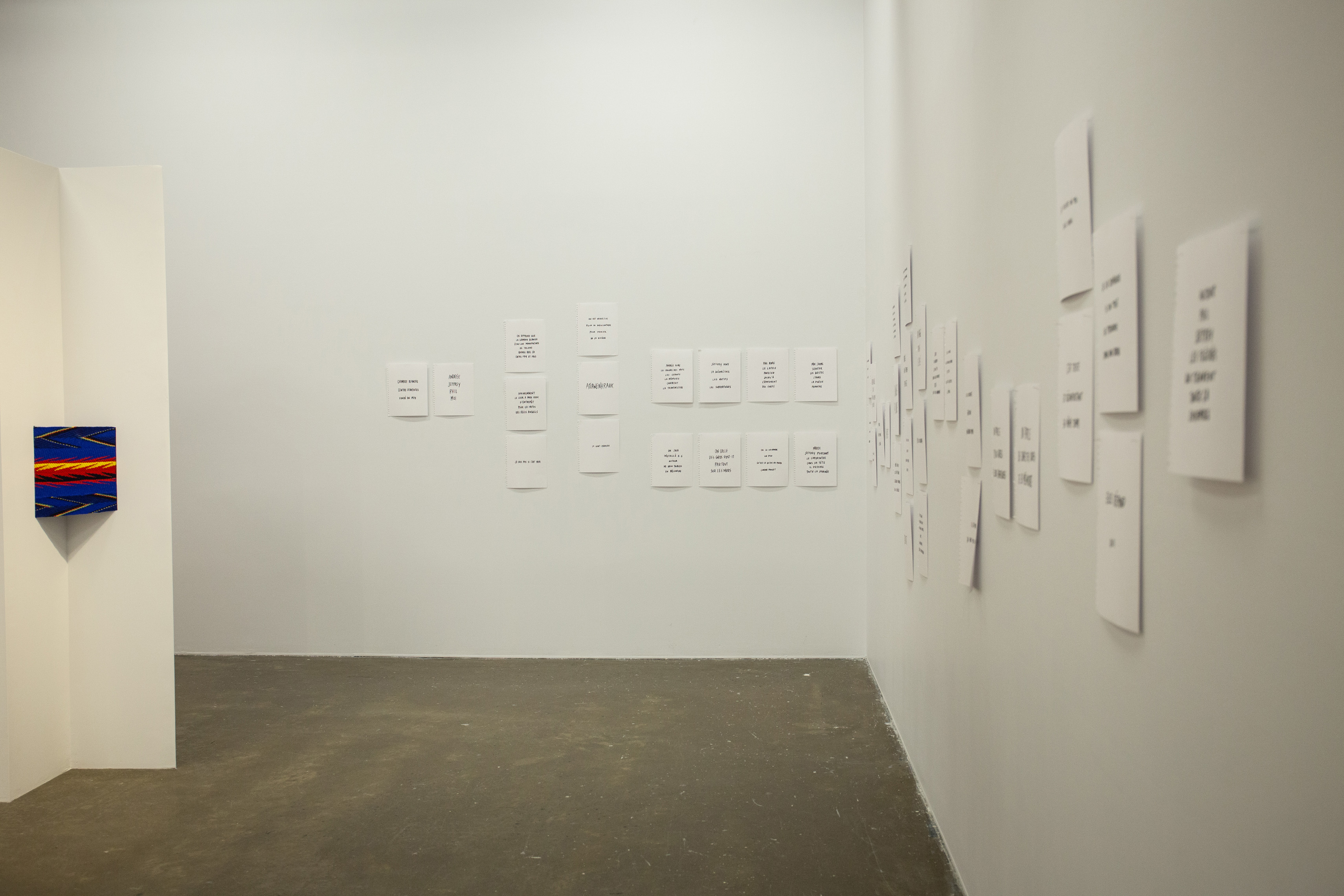
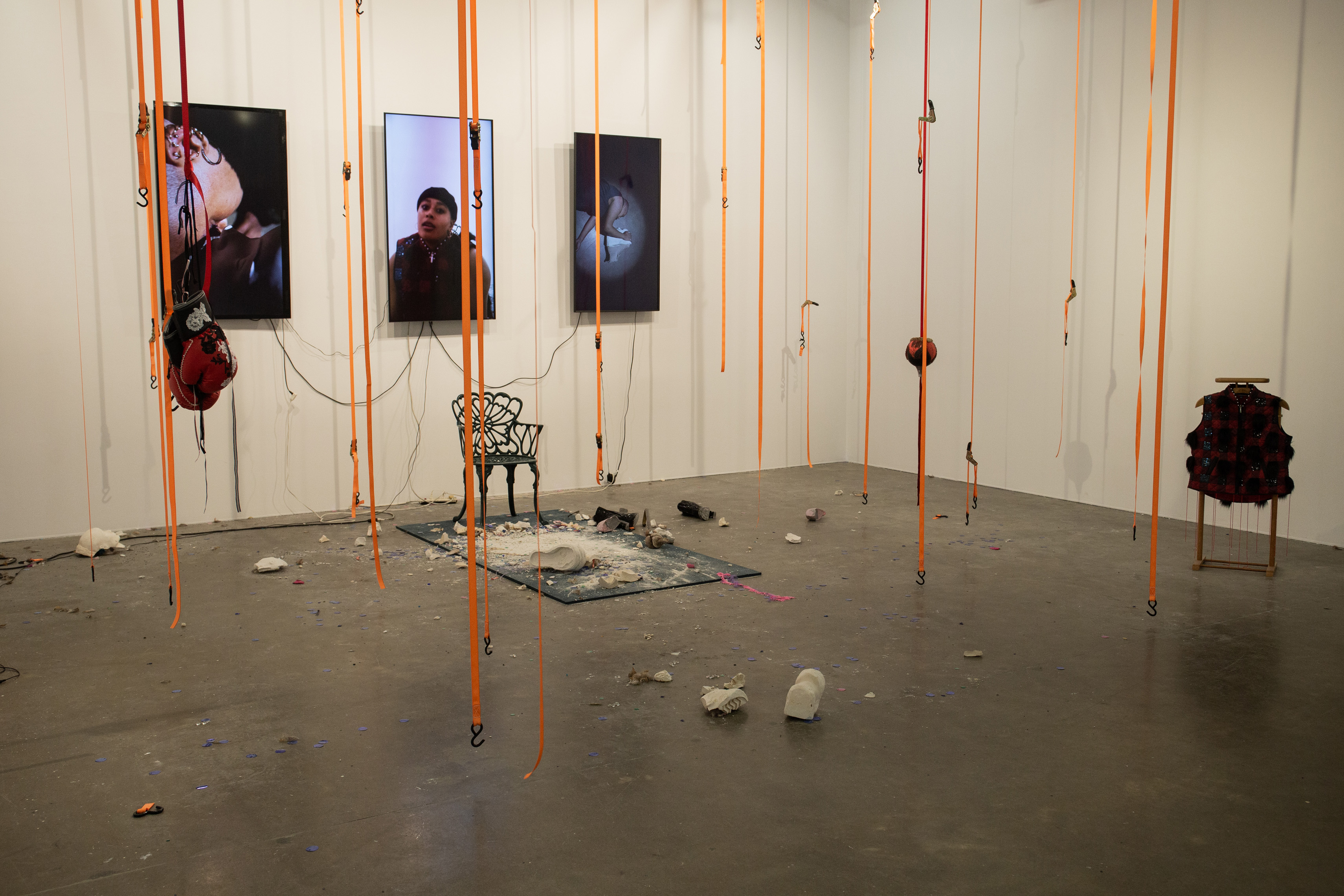
Aïcha Bastien N’Daye and Dgino Cantin
Combining danse and sculpture, Our Ratchet Hearts is a poetic installation in which Aïcha Bastien N’Daye and Dgino Cantin’s take over space through movement, merging their creative outlooks. Playing to their strengths rather than their differences, the work unfolds as an eclectic codex, borrowing from the visual language of hunters, cabarets enfumés and boxing rings. Cantin’s sculptures are turned into accessories, at once fragile and heavy, which are then subjected to Bastien N’Daye’s impulses and movements so as to render a narrative, a place where spontaneous gesture happens in relation to shifting rhythms and contexts.
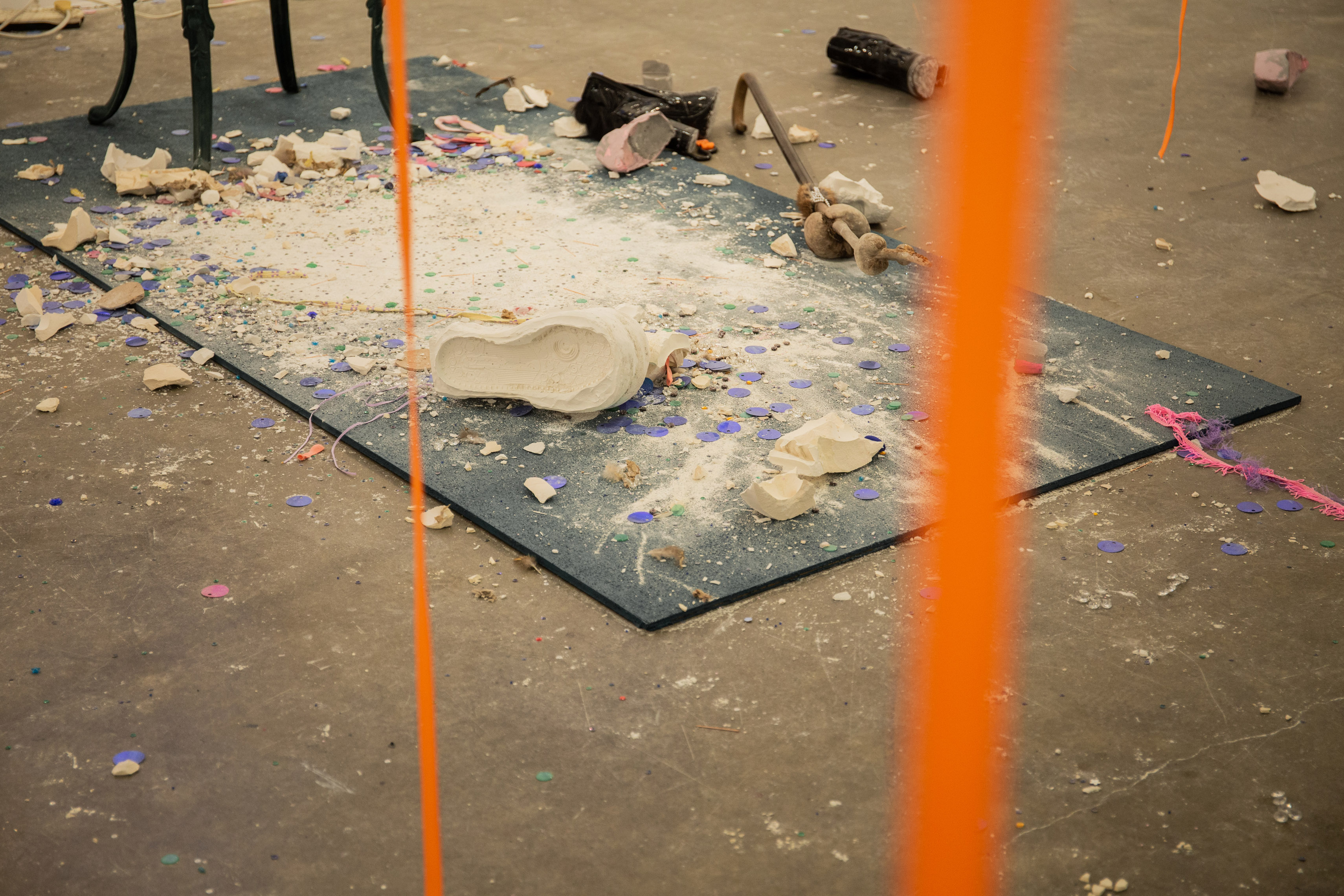
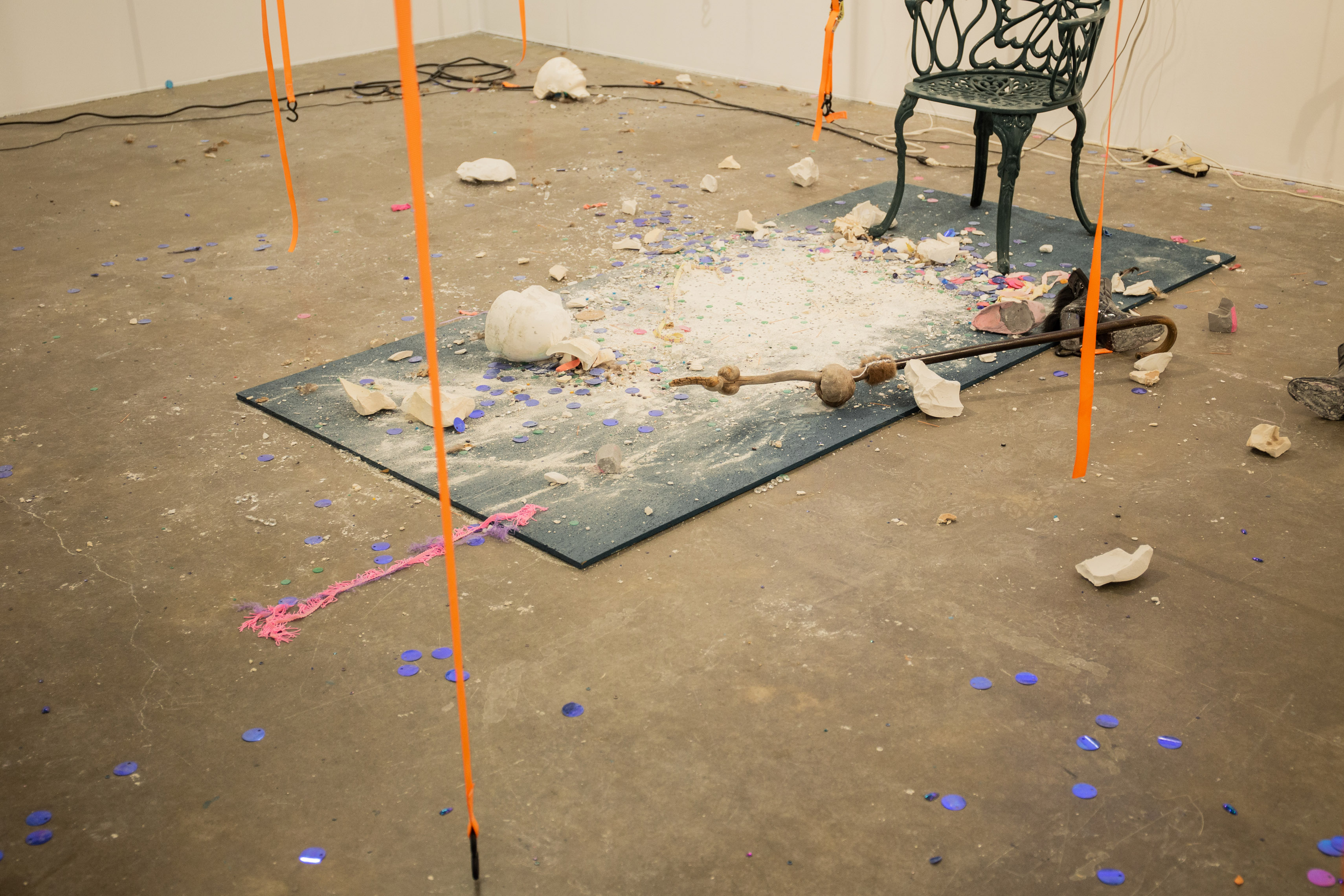
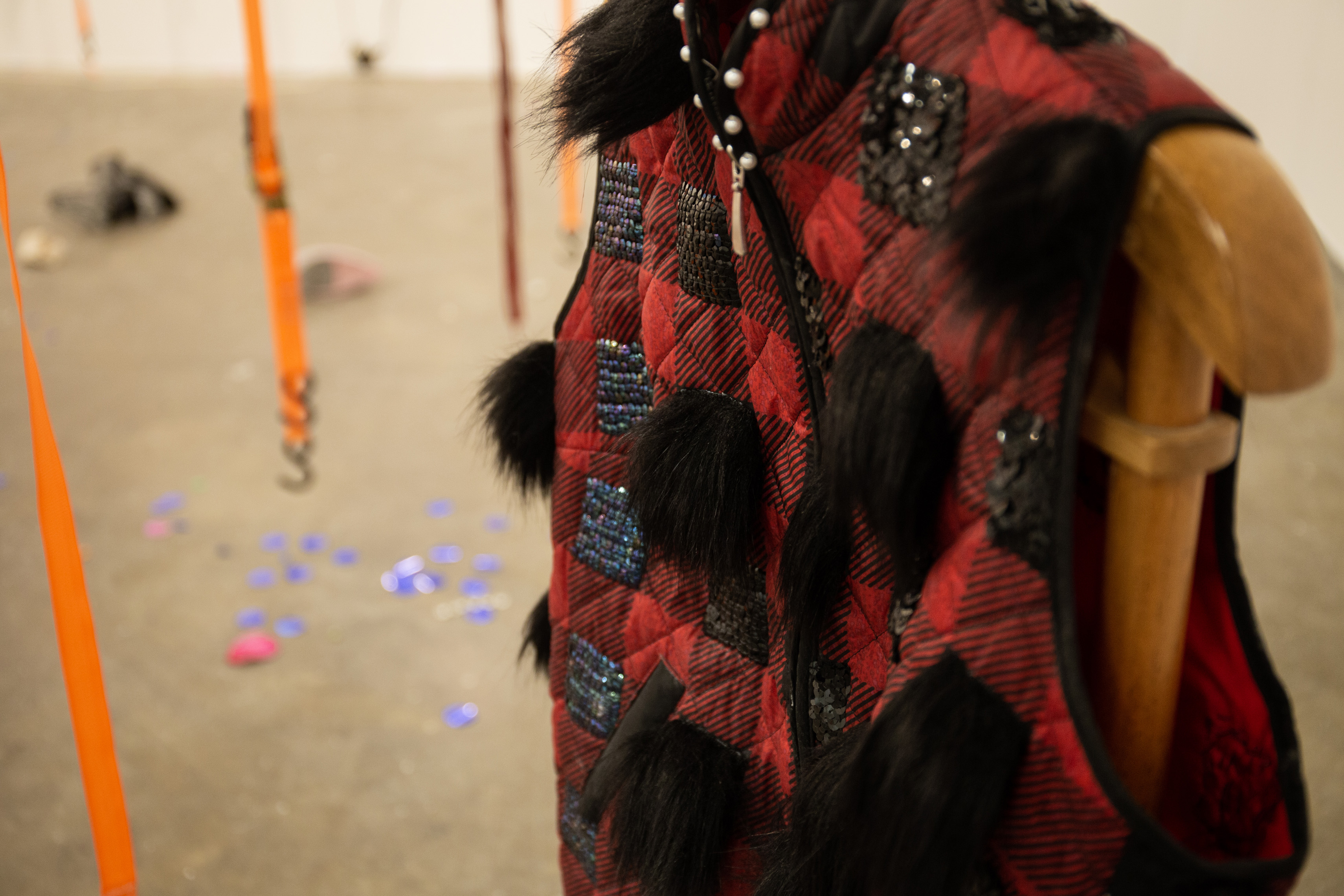
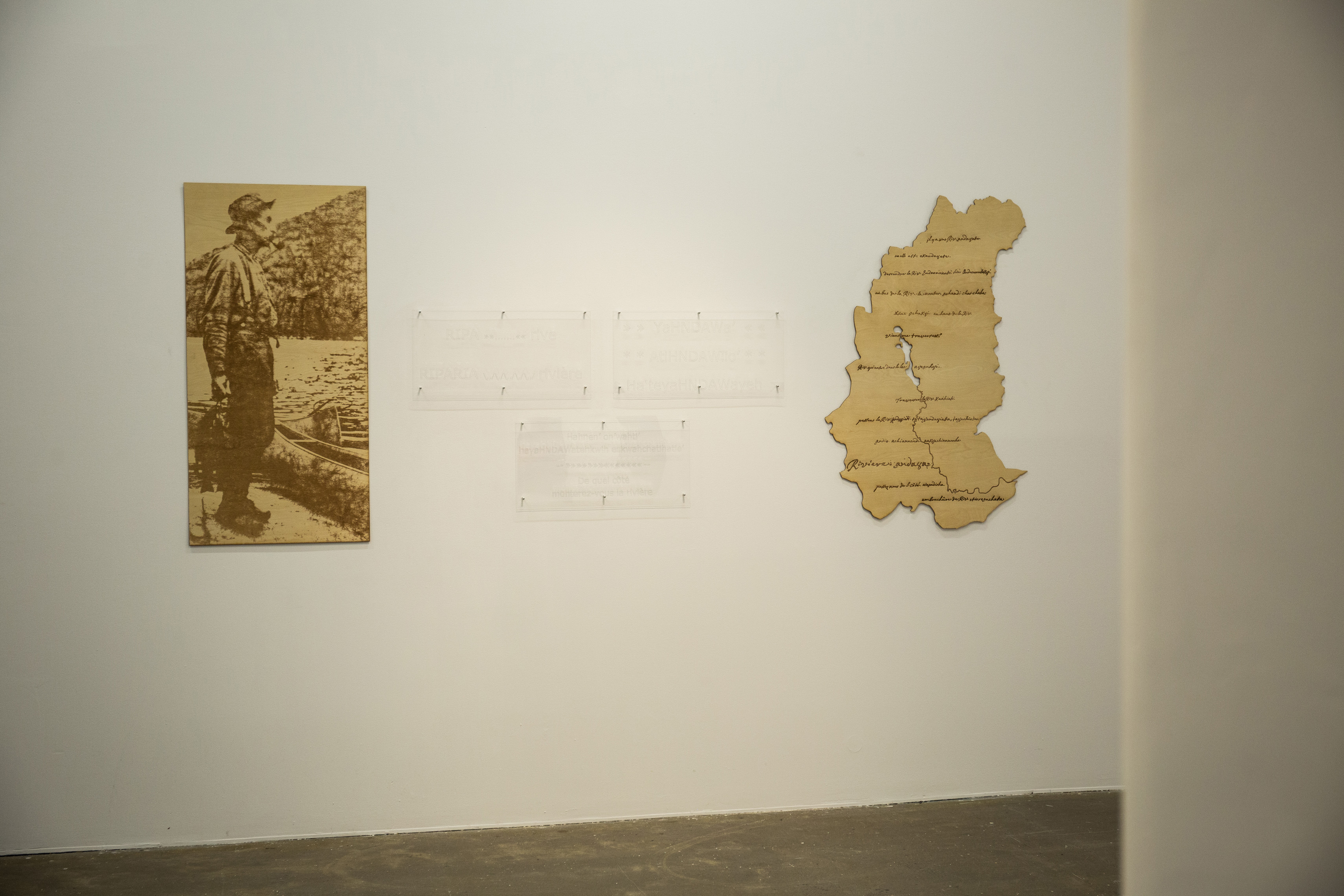
Andrée Levesque Sioui
Andrée Levesque Sioui has been teaching the Wendat language for over ten years, and yet, this polysynthetic language remains a source of mystery and fascination. In this work, her interest lies in the root of words, the smallest lexical unit that carries the primary meaning of each word and from which we create word-phrases. In these river-like locutions through which speech travels, we’re reminded of who we are and encouraged to make ourselves heard. Levesque Sioui imagines Yahndawa’ and its watershed as a grandmother, carrying these words to us, she who hasn’t forgotten anything and who has heard the language of her ancestors.
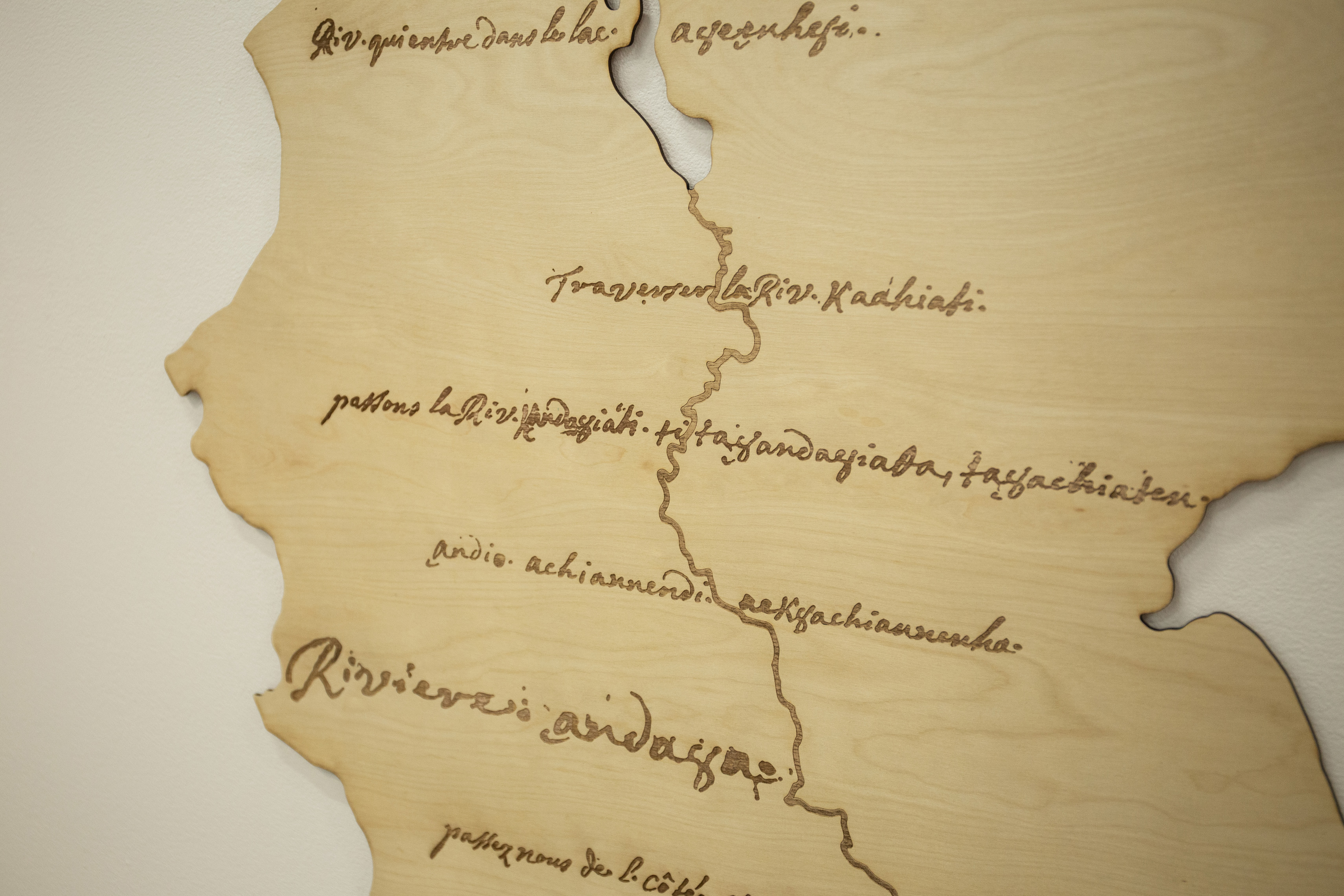
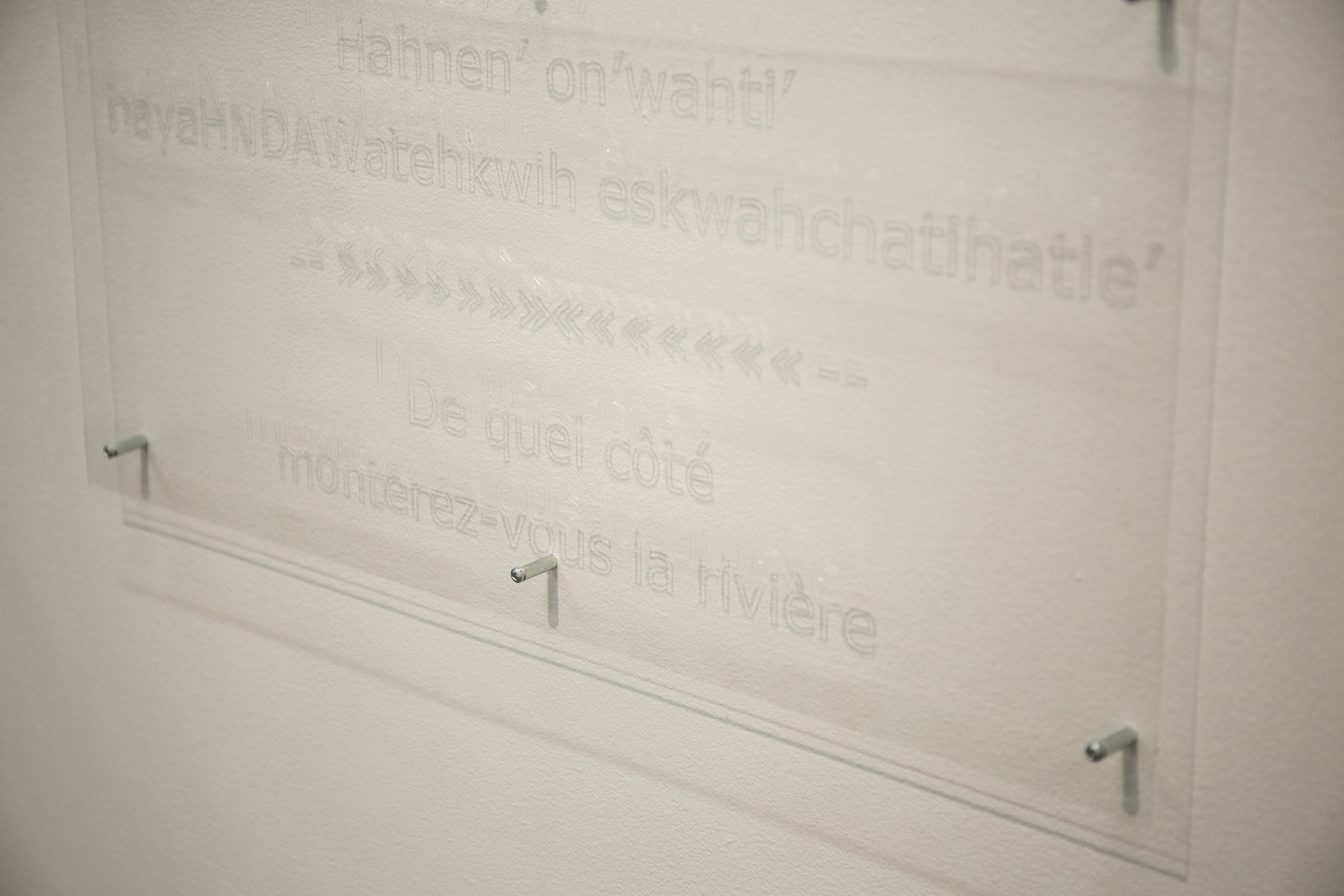
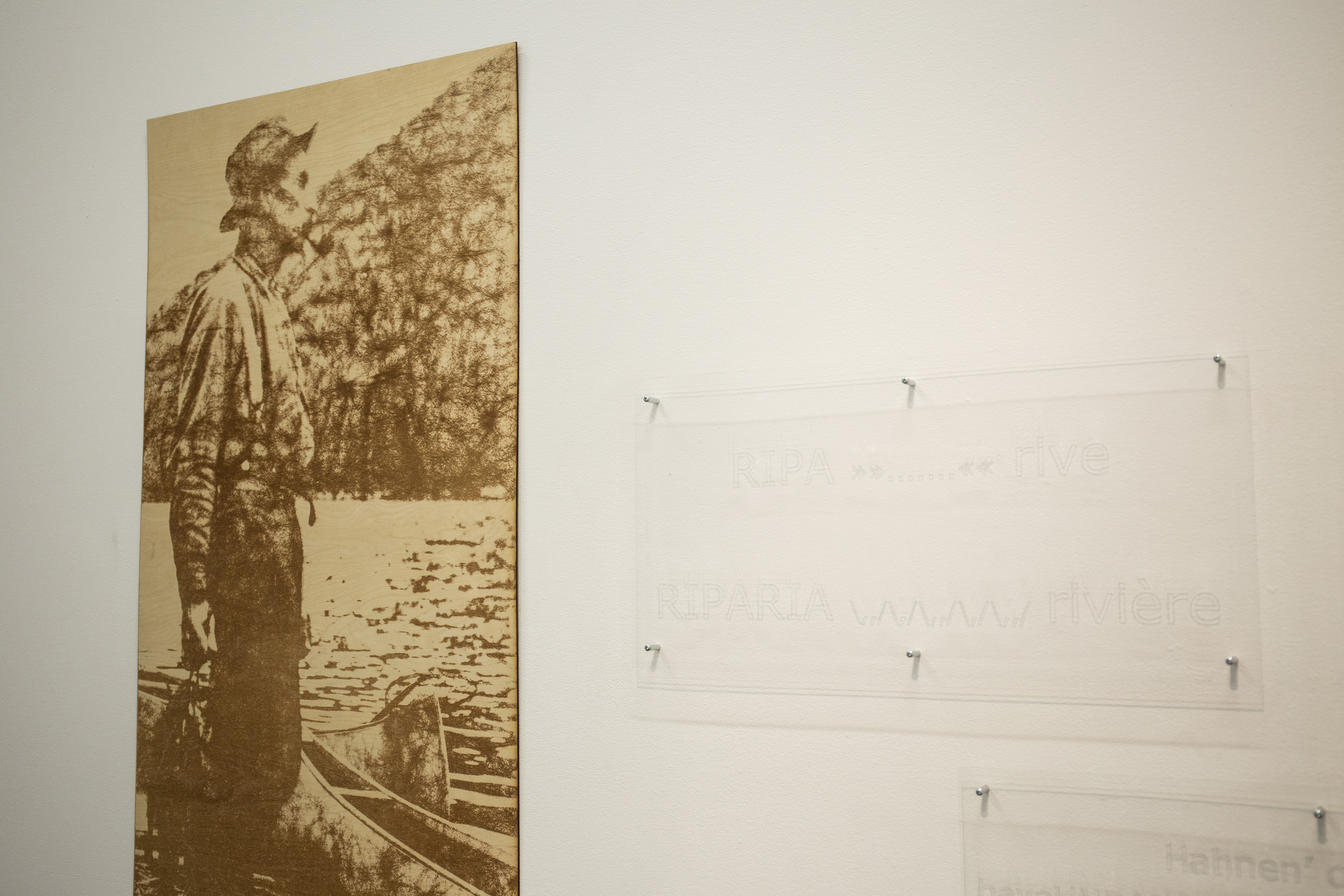
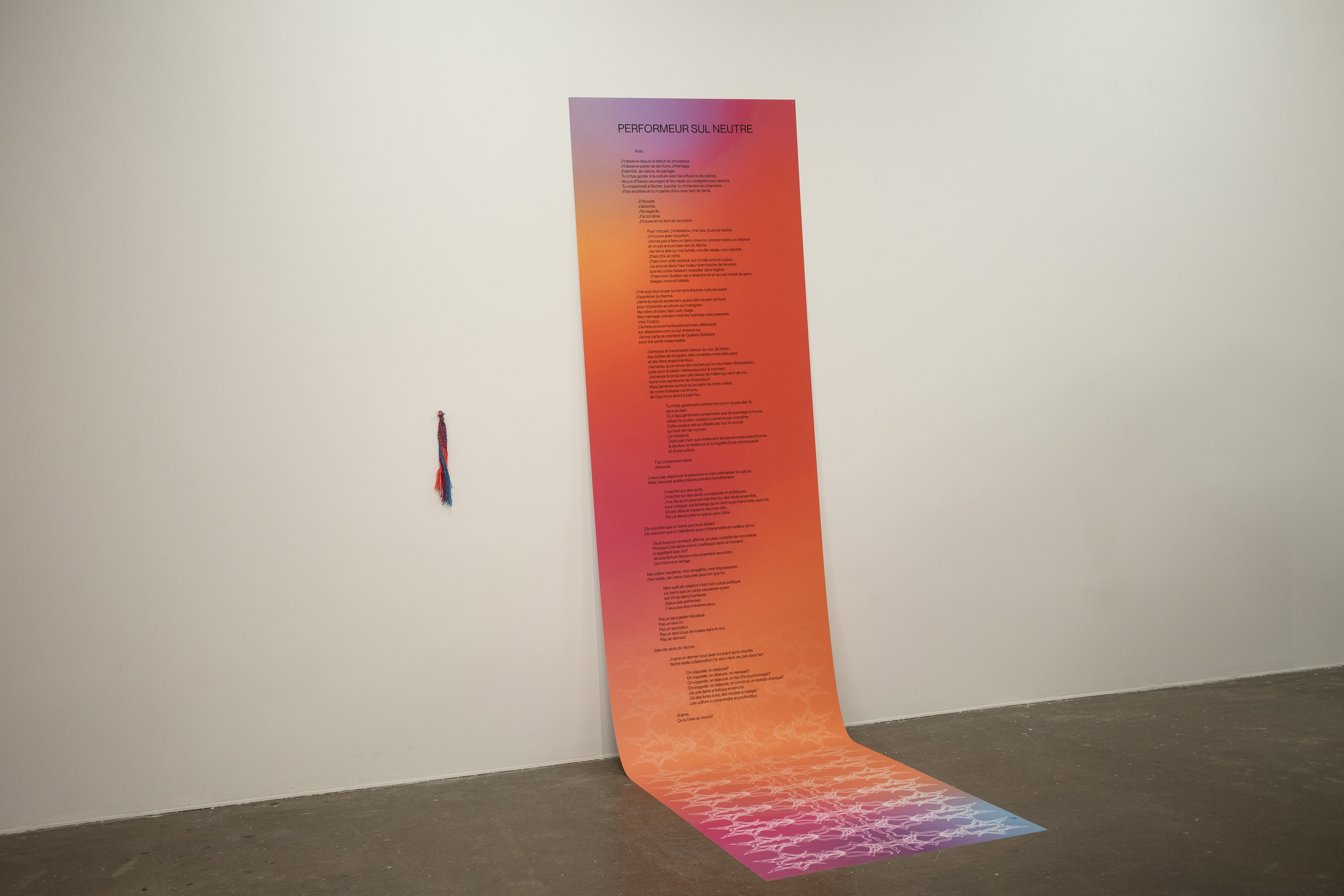
Philip Després
On a long sheet of polymer fastened to the exhibition wall, Philip Després wears his heart on his sleeve. In a letter that recalls his journey with Yahndawa’, the performer admits his unease and resistance to participating in the exchange. Després resorts to humility, favouring a gentler style than that of his habitual performances, opting to listen and focus on the learning still to come. His letter addresses the challenges that can arise when we nurture relationships between people who don’t share identities or culture, and whom we may otherwise be oblivious to. With sense and sensibility, the artist delivers the letter during a performance, navigating both public and intimate spaces.

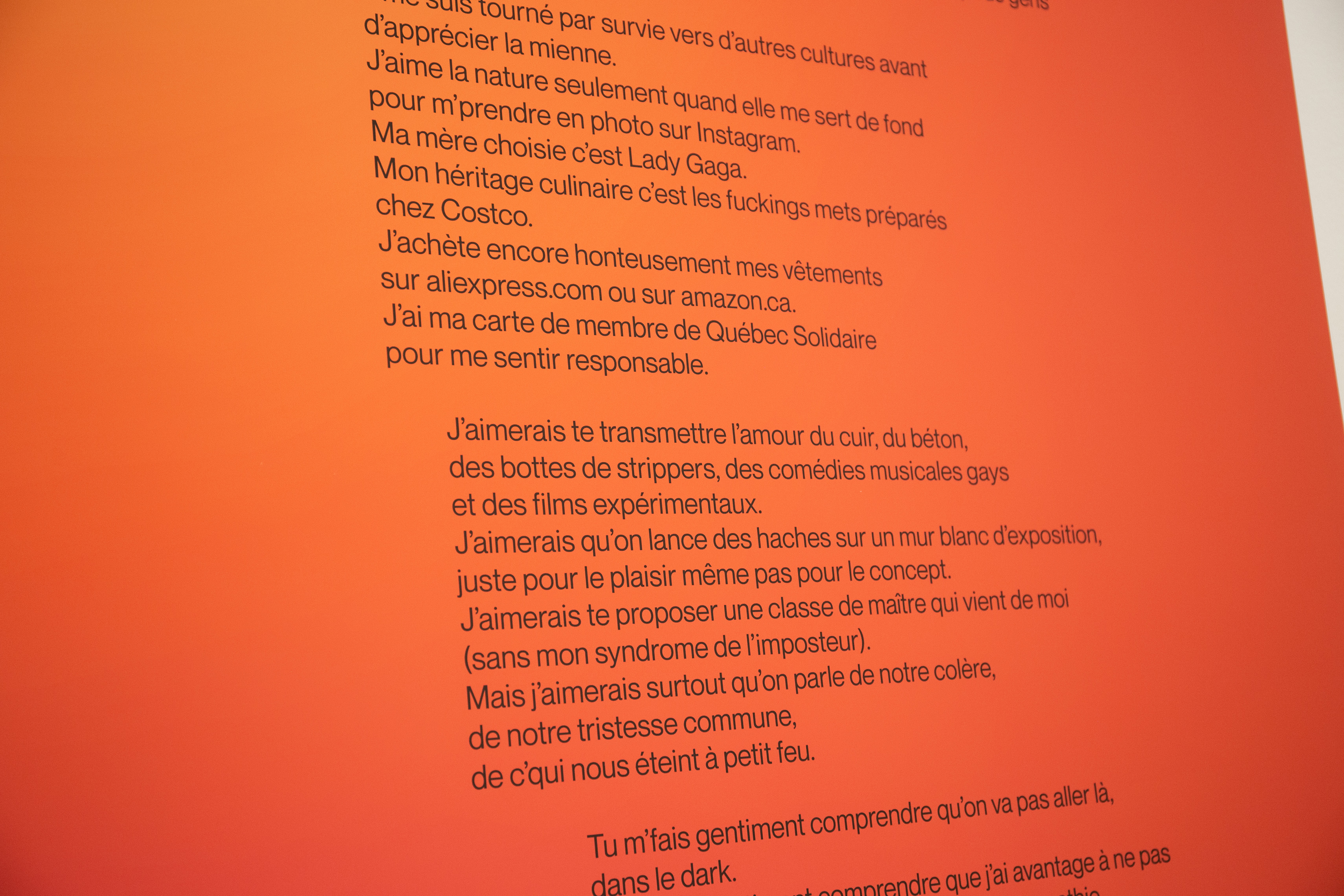
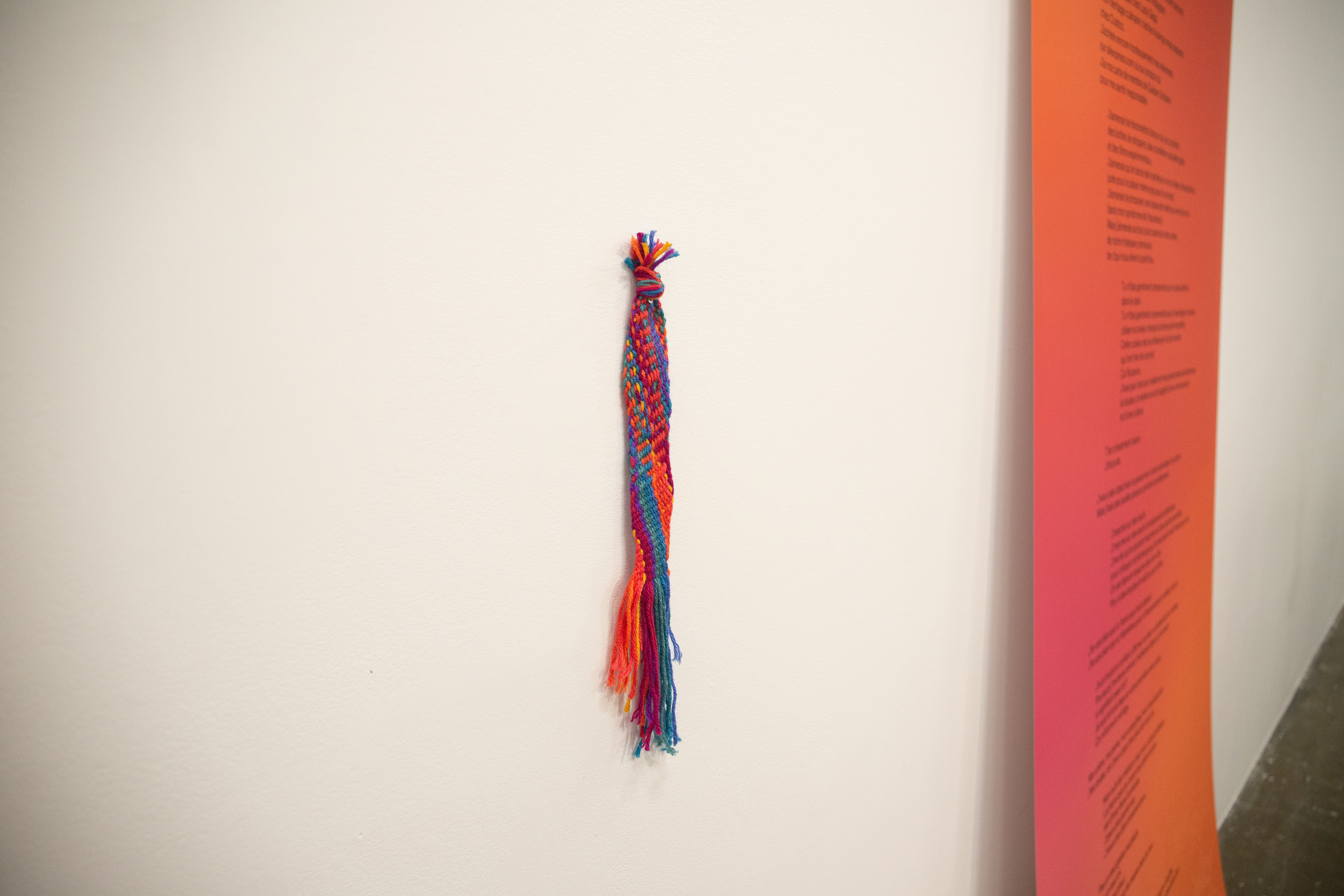

Annie Baillargeon, Alexis Gros-Louis, Alain-Martin Richard and Teharihulen Michel Savard
In the woods located between the river, the city, the railroad and the cemetery, the four artists gather to carry out various interventions and gestures on the land. Slipping into costumes, masks and snowshoes, three of them break off into the underbrush, looking to collect discarded litter, regrouping later to clean their findings together. At the very end of the performance, they make their way back to the fourth artist, who has pitched flags and sowed plants on the land. The record of this spontaneous and communal performance gives us a look behind the curtain, at how the artists managed to come together within the tapestry of their different practices.

Anne-Marie Bouchard and Manon Sioui, in collaboration with France Gros-Louis Morin
This video installation, split into two separate yet complementary parts, presents river and landscape that mirror each other, flowing in synchronous and asynchronous ways like two parallel horizons. The landscape, evoked by projections of plants and materials from the natural world, embraces and makes way for the river, flowing fabric meticulously adorned with beaded patterns in reference to the wampum from the Seven Fires prophecy. As such, La rivière des Sept feux becomes a gathering place – for the delicate corn husk figurines that populate the set, as well as for us, the viewers who observe the scene from the shore.
